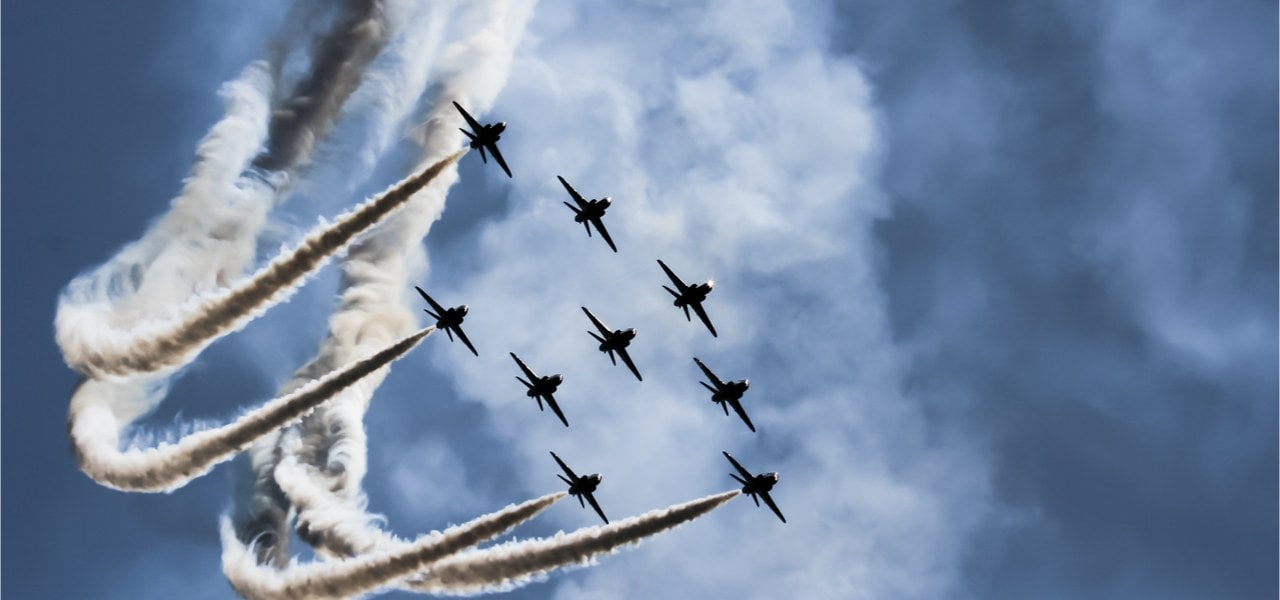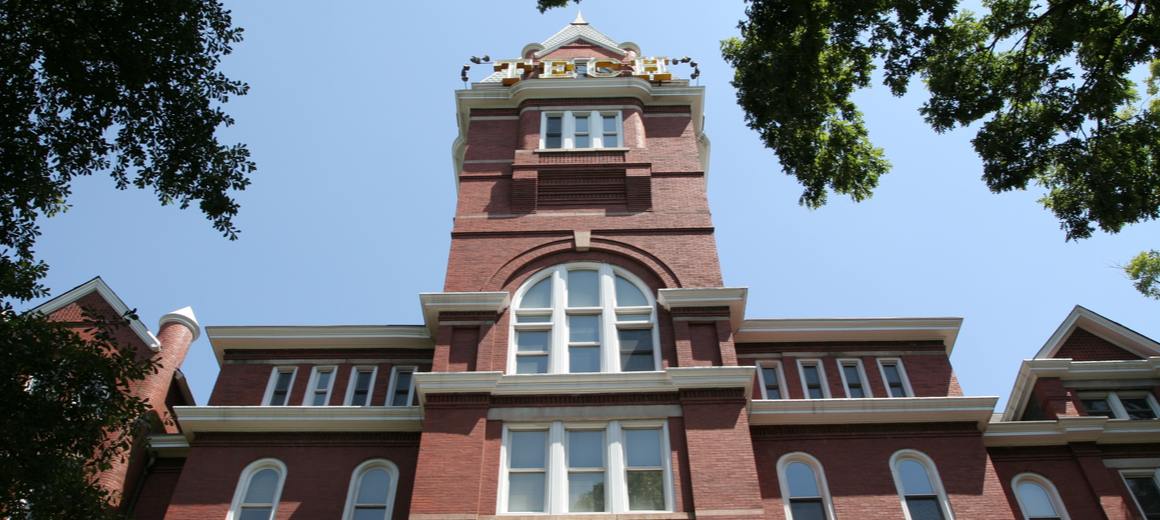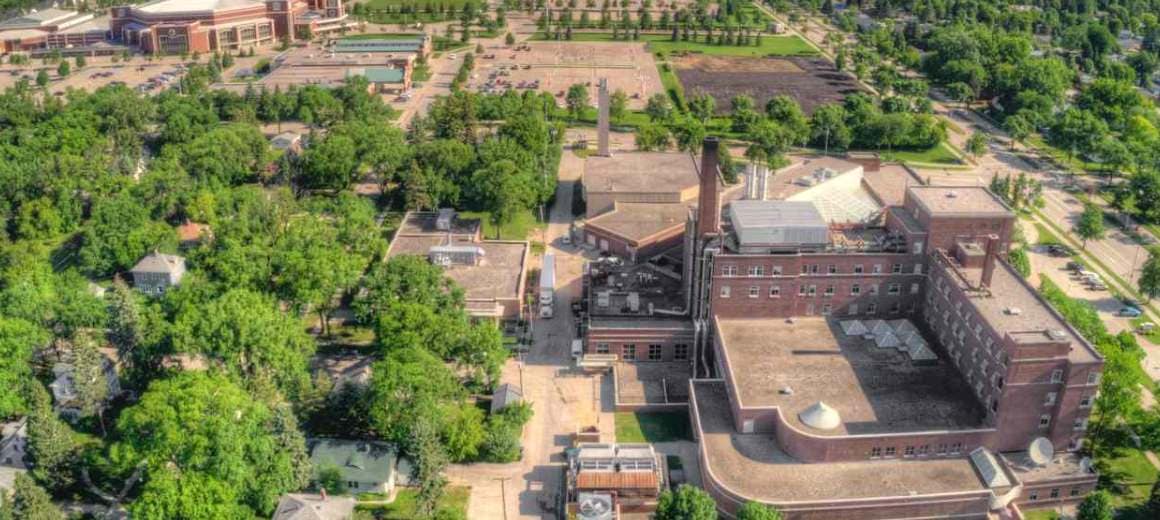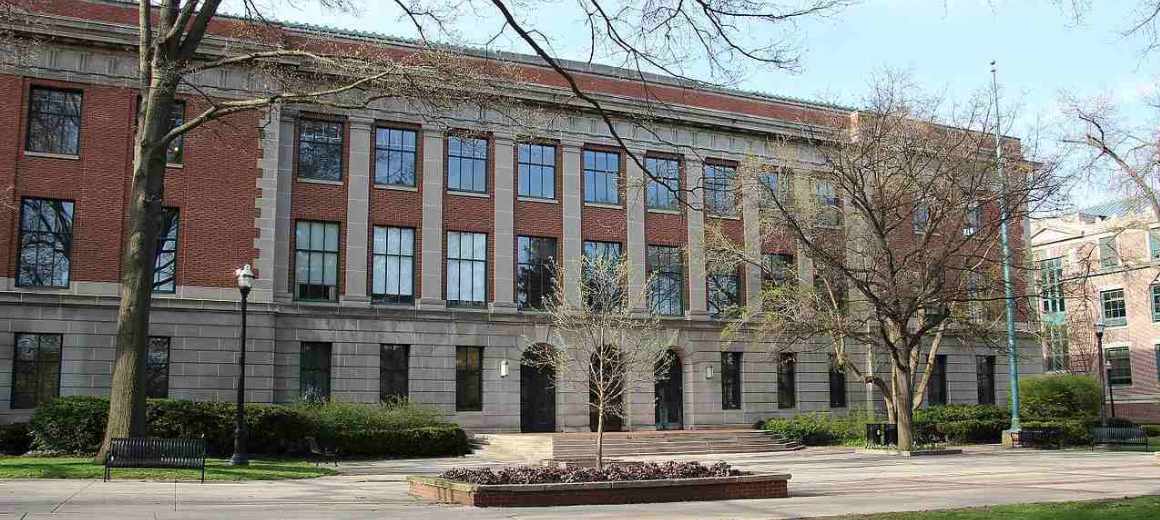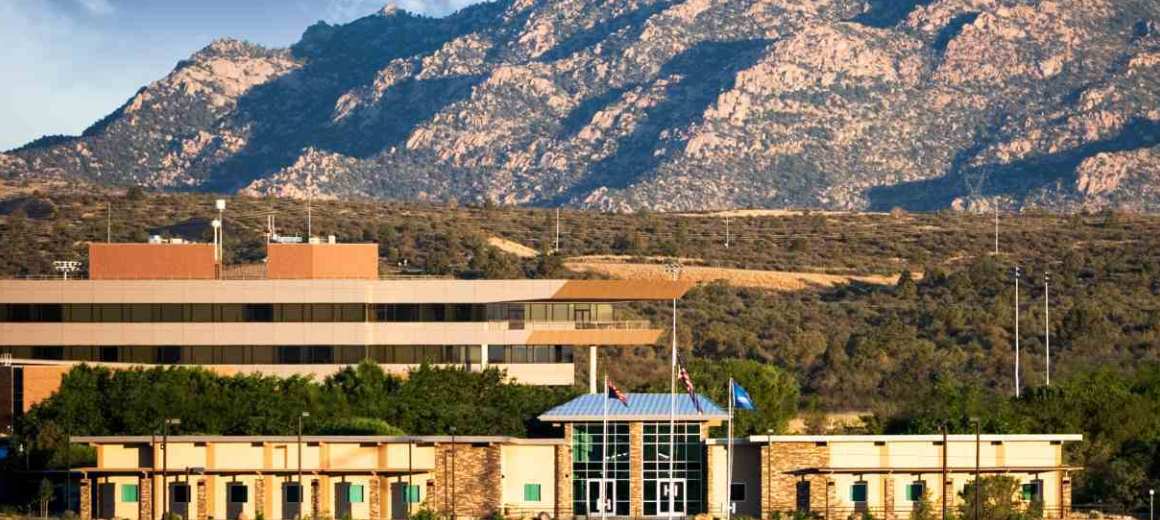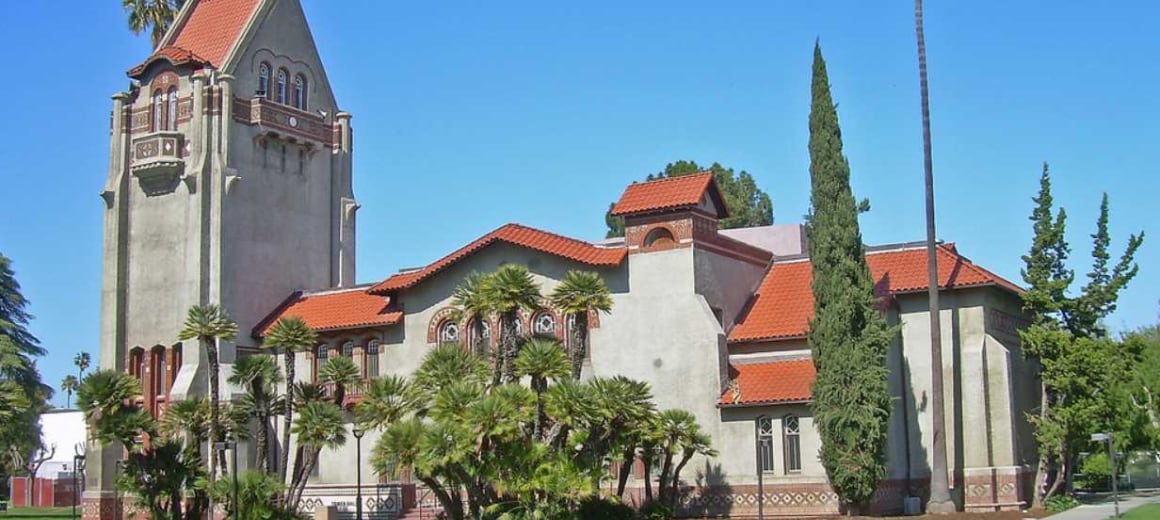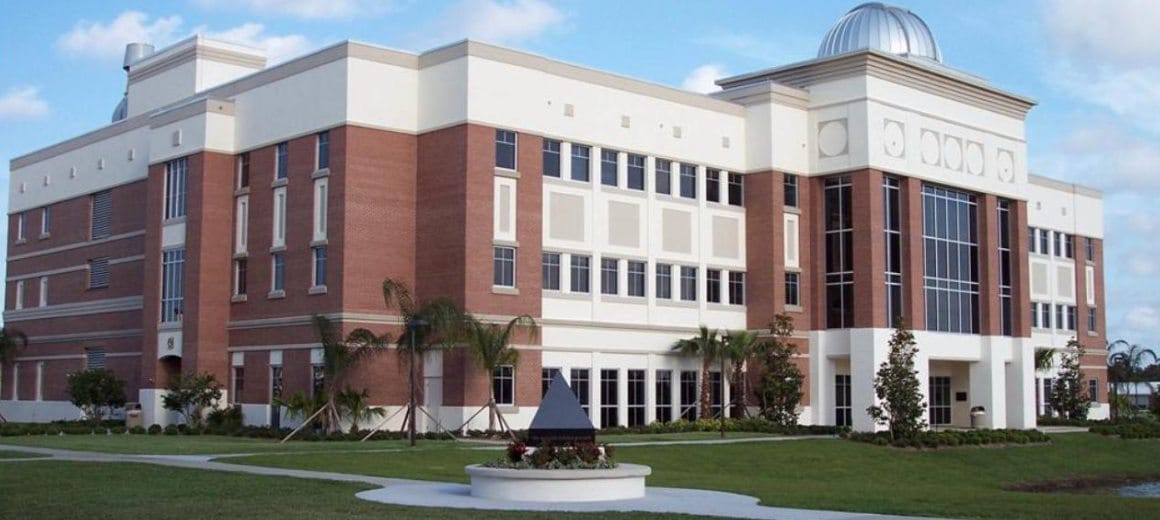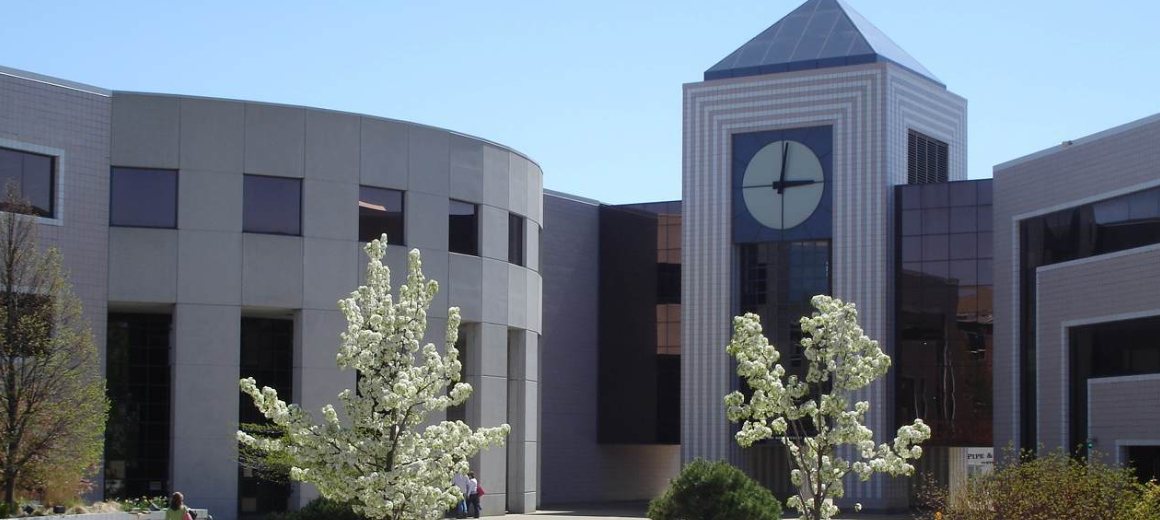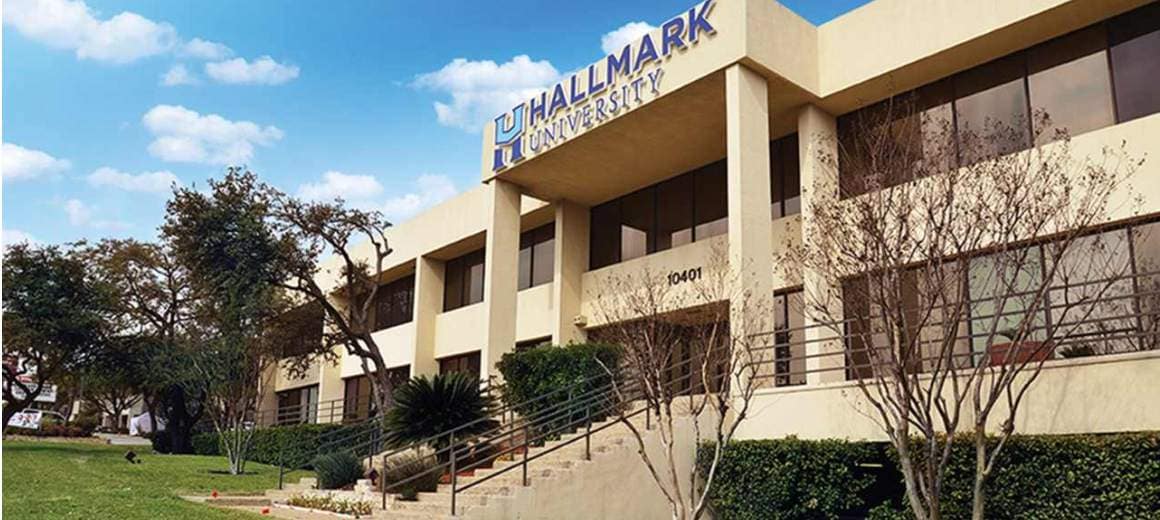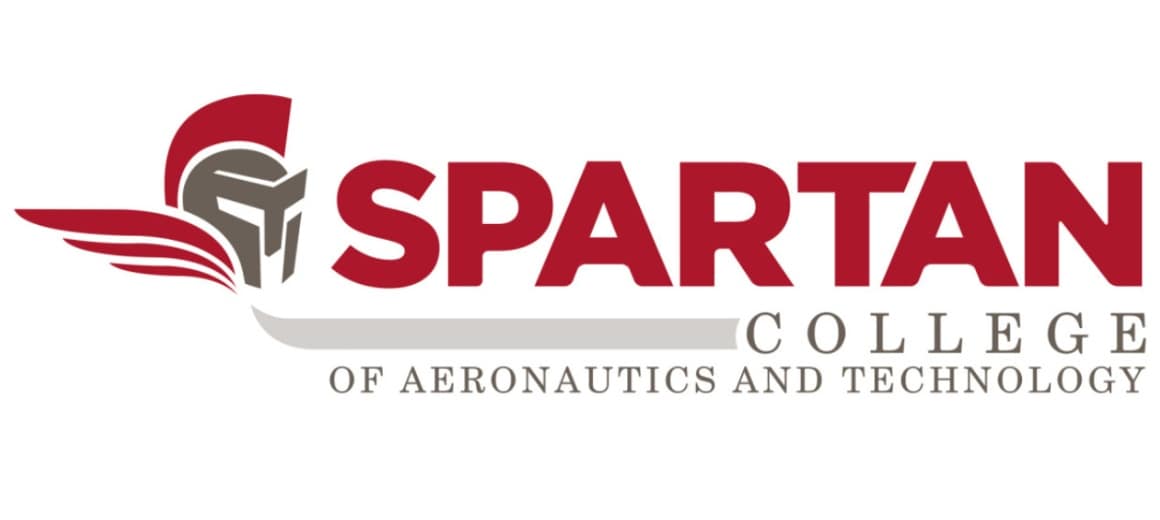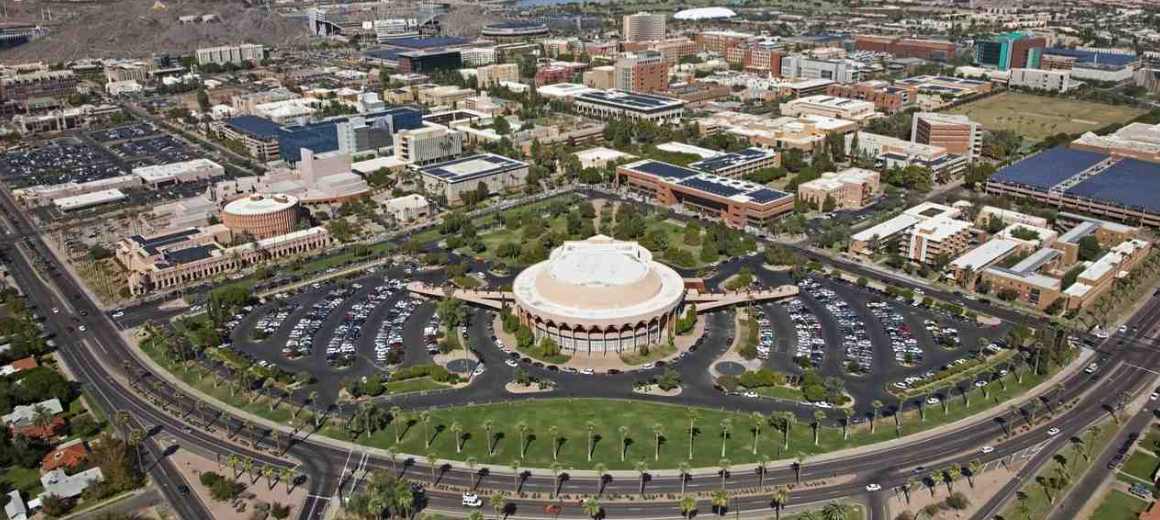Comparative Analysis of Top US Aviation Courses
Intro: In this report, we take a detailed look at some of the top universities in the US offering aviation and aeronautics courses, including a comparison of the cost, courses offered, course content, duration of study, and aviation scholarships and grants.
Table of Contents
Summary of the top aviation courses at US universities
History of aviation education and aviation universities in the US
Aviation courses at top universities in the US
Massachusetts Institute of Technology
Georgia Institute of Technology
Embry-Riddle Aeronautical University
Florida Institute of Technology
Spartan College of Aeronautics and Technology
Summary and thoughts about the future of aviation
A quick word to the universities featured
Introduction
Demand for air transportation is expected to increase steadily through 2026.[1] This growth will continue to offer promising job prospects for commercial and private airline pilots, aircraft manufacturers, and individuals employed by airports.
Along with the rapid increase in air travel, innovation in aircraft manufacture and emerging technologies is gradually opening up new fields and career opportunities for aviation mechanics and avionics professionals trained in a particular type of aircraft.
Keeping in mind that a Bachelor’s degree is a financial commitment and can take as many as four years to complete, the importance of choosing the best educational institution for your studies can’t be stressed enough.
Speaking of challenges that our students, staff and faculty are facing – the aviation and aeronautical industries have faced severe challenges in dealing with the COVID-19 pandemic, and the impacts on the industry have been numerous and devastating.
That said, with the vaccine rollout well underway across the US, with some universities and colleges allowing for vaccination on campus, and the world entering the process of opening up again, there is no better time than now to study to become a pilot. Given the rising demand for travel, the world is going to need considerably more pilots in future, so it’s a career path with extremely healthy prospects.
This comparative analysis of a cross-section of 12 US aviation universities and colleges gives you key information and insights into the courses available to students. The report is divided into four sections:
-
A summary of the top aviation courses at US universities plus a brief history of aviation education in the US
-
Comparative table showing what each university offers aviation students
-
Specific information for each university’s aviation courses
-
Perspectives on the future of aviation and how this will affect aviation and aeronautics training in years to come.
Summary of the top aviation courses at US universities
-
Of the universities surveyed, eight offer degrees at bachelor level, five offer graduate degree programs, and four offer associate of applied science degrees, while two offer diplomas and certificates. The two-year associate degree allows students to get out of the classroom and into the workforce in half the time it would take to complete a bachelor’s degree, which relieves the financial burden of study.
-
Despite the differences between various universities’ aviation and aeronautical courses, all tend to offer similar resources to their students, from aircraft fleets and flying clubs to flight and engine simulators. This indicates that aviation schools are realizing the increasing importance of meeting industry needs by equipping their labs with the latest technologies.
-
The comparisons suggest that aviation programs in community colleges, such as Western Michigan University, allow students to set out on a career in aviation even when funds for study are limited.
History of aviation education and aviation universities in the US
-
The first academic interest in human flight in the US was recorded[2] in 1883 when Professor JJ Montgomery of Santa Clara University in California carried out a series of glider tests.
-
Seven years later, Octave Chanute gave a number of lectures to students of the Sibley College, Cornell University entitled “Aerial Navigation” which he followed with a book called Progress in Flying Machines in 1894.
-
The Aeronautics and Astronautics (AeroAstro) Department at Massachusetts Institute of Technology (MIT) can be traced back to 1896, when student Albert J Wells built a 30-square-inch wind tunnel as part of his mechanical engineering thesis.
-
Soon after the Wright brothers’ first successful flight at Kitty Hawk, North Carolina, in 1903, universities around the world began offering aviation education and training programs.
-
One of the first aviation education initiatives in the US took place in October 1909, when Wilbur Wright gave three hours of training to Lieutenants Frank P Lahm and Frederic E Humphreys on Signal Corps Airplane No1 (bought from the Wright brothers) before flying solo.
-
A year later in 1910, Lt Benjamin D Foulois taught himself how to fly in Signal Corps No1 at Fort Sam Houston, Texas.
-
Widespread aviation education in the US was born out of a need to train a significant number of pilots in the First and Second World Wars, but it was only in January 1942 that the Air Education and Training Command (AETC) was established by the War Department.
-
The first American collegiate aeronautics program took off at the University of Michigan in 1914, followed in 1916 by the establishment of a department of aeronautical engineering, and the first four-year program in aeronautical engineering.
-
The Daniel Guggenheim School of Aeronautics opened at New York University in 1925. The Daniel Guggenheim Fund for the Promotion of Aeronautics gave grants to MIT, University of Michigan, Stanford University, and the California Institute of Technology, and went on to play an important role in the expansion of programs in aeronautical engineering across the country.
Aviation courses at 12 top institutions in the US
| University | World ranking | Aviation programs offered | Pilot training programs offered | Aviation facilities | Cost per year of studies | Cost of accommodation per year | Course Length |
|---|---|---|---|---|---|---|---|
| Purdue University | 60 | Aviation Management (BSc) | Aeronautical Engineering Technology (BSc) | Aviation electronics lab | Polytech Institute for the 2018/19 academic year: | Resident: $10,030 | 4 years full-time (undergrad) |
| Aerospace Studies Minor | Aviation Management (BSc) | Aviation materials lab | Resident: $10,564 | Non-resident: $10,030 | |||
| Airline Management and Operations (BSc) | Engine test cells | Non-resident: $29,366 | International: $10,030 | ||||
| Aerospace Financial Analysis (BSc) |
Hangar of the Future (HOF) lab
|
International non-resident: $31,366 | |||||
| Airport Management and Operations Management (BSc) |
Holleman - Niswonger Simulator Center (features several types of flight training devices for hands-on training)
|
||||||
| Professional Flight Technology (BSc) | Operations control center | ||||||
|
Unmanned Aerial Systems (BSc)
|
|||||||
|
Airframe & Powerplant
|
|
Massachusetts Institute of Technology |
5 |
Aerospace Engineering (BSc)
Engineering as Recommended by the Department of Aeronautics and Astronautics (BSc) |
Aerospace Engineering (BSc) |
Aerospace computational design lab
Aerospace controls lab
Gas turbine lab
International Center for Air Transportation
Laboratory for Aviation and the Environment
Strategic engineering research group
System architecture lab
System engineering research lab
Technology Laboratory for Advanced Materials and Structures
Wright Brothers Wind Tunnel |
$51,520 (grad and undergrad) |
Residence Halls:
Single: $5,590
Double: $4,945
Triple: $4,420
Quad: $3,905 |
4 years full-time (undergrad) |
|
Georgia Institute of Technology |
35 |
Aerospace Engineering (BSc)
Aerospace Engineering (joint five-year BSc and MSc program) |
Aerospace Engineering with Flight Mechanics and Controls research area (BSc or joint five-year BSc and MSc program) |
Center for Advanced Machine Mobility (CAMM)
Indoor Flight Facility (IFF,) a state-of-the-art motion-capture lab
John J Harper Wind Tunnel
300ft per second free-jet wind tunnel with anechoic chamber and engine jet acoustic test facility
Aerothermodynamics Research and Technology Lab (ARTLAB) |
Georgia residents: $10,008 (tuition)
Non-Georgia residents: $30,604
Mandatory student fees: $2,416 |
Single apartment: $10,544
Two-person single split: $9,918
Shared apartment for more than two people: $9,562 |
4 years full-time (undergrad)
5 years part-time |
|
University of North Dakota |
431 |
Airport Management (BSc)
Aviation Management (BSc)
Air Traffic Management (BSc)
Aviation Technology Management (BSc)
Commercial Aviation (fixed wing) BSc
Commercial Aviation (Helicopter) BSc
Business Aviation Specialization (BSc)
Aviation (MSc) |
Flight Education (BSc)
Unmanned Aircraft Systems Operators (BSc)
Professional Flight Minor (BSc) |
UND Aerospace/Grand Forks International Airport
Fleet of 120 aircraft
11 heated hangars
Cessna C172 flight training device
Seminole flight training device
Canadair regional jet flight training device
Large maintenance center
Flight operations building
16 FAA flight training approved devices |
North Dakota residents: $8,695 full-time enrollment
Minnesota residents: $9,562
Contiguous residents: $12,307
Non-residents: $20,759 |
Room and meal plan: $8,974 |
4 years full-time (undergrad) |
|
The Ohio State University |
70 |
Aeronautical and Astronautical Engineering (BSc)
Aviation (BA or BSc) |
Aeronautical and Astronautical Engineering (BSc) |
Electronics lab
Computing labs
Machine shops
Aerospace research center
Air Force Research Lab
Aerospace Systems Directorate
Computational Sciences Centre
Air Force Research Lab Structural Sciences Center
Simulation Innovation and Modeling Center |
Ohio residents: $10,726
Non-residents: $30,742
International: $33,670 |
Residents: $12,434
Non-residents: $12,434
International: $12,434 |
4 years full-time (undergrad) |
|
Embry-Riddle Aeronautical University |
601-800 |
Aeronautical Science (BSc)
Aeronautics (Bsc)
Aerospace and Occupational Safety (BSc)
Aerospace Engineering (BSc)
Aerospace Physiology (BSc)
Air Traffic Management (BSc)
Aviation Business Administration (BSc)
Aviation Maintenance (BSc)
Aviation Maintenance Science (BSc)
Aviation Security (BSc)
Global Conflict Studies (BSc)
Homeland Security (BSc)
Interdisciplinary Studies (BSc)
Meteorology/Applied Meteorology (BSc)
Safety Management (BSc)
Unmanned Aircraft Systems (BSc)
Unmanned Aircraft Systems Science (BSc)
Unmanned Systems Applications (BSc)
Wildlife Science (BSc) |
Aeronautics (BSc)
Aeronautical Science (BSc)
Aerospace and Occupational Safety (BSc)
Safety Management (BSc)
Aerospace Physiology (BSc)
Aerospace Engineering (BSc) |
Unmanned aircraft lab
En route, terminal radar and control tower domains labs
Airframe and powerplant lab
Weather research center
Media broadcasting lab
Aircraft accident forensics lab
Industry-standard flight simulators and aircraft
Air traffic control lab
Meteorology suite
Prescott, AZ’s Aerospace Experimentation and Fabrication Building |
Florida residents: $34,236
Non-residents: $35,964
Additional $205 per semester for College of Engineering Program students |
Room and board: $11,438 |
4 years full-time (undergrad) |
|
San José State University |
440 |
Professional Flight (BSc)
Aviation Management (BSc)
Flight Operations (BSc)
Maintenance Management (BSc)
Aerospace Engineering (BSc) (MSc)
Aerospace Studies minor |
Professional Flight (BSc)
Flight Operations (BSc) |
Central machine shop
Engineering computer services
Engineering buildings
Aviation electronics laboratories |
State residents: $7,796
Non-residents: Additional $396 per unit |
Resident campus housing: $16,442
Non-residents: Additional $396 per unit |
4 years full-time (undergrad) |
|
Florida Institute of Technology |
5 (according to Times Higher Education 2019) |
Aeronautical Science (BSc)
Aeronautical Science with Flight (BSc)
Aerospace Engineering (BSc)
Air Traffic Control Minor
Aircraft Dispatcher Minor
Aviation Human Factors & Safety (BSc)
Aviation Management (BSc, BA or MSA)
Aviation Sciences (PhD)
Aviation Airport
Development (MSA) |
Aviation Management with Flight (BSc)
Aviation Meteorology (BSc)
Aviation Meteorology with Flight (BSc)
Aviation Human Factors & Safety with Flight (BSc) |
Computer labs for airport design and planning
Basic aviation training device (BATD) lab – enables all students to fly desktop simulators under the supervision of a flight instructor
52 new and refurbished aircraft, including Cessnas and Pipers
Human factors lab
FIT Aviation – manages the flight training facilities, which are conveniently located at nearby Melbourne Airport |
Engineering and Science Majors: $20,550
All other factors: $18,730
Tuition fees apply on a semester basis for spring and fall |
Residence Halls Cost/Term:
Single occupant from $3,195
Double occupant from $2,210
Suites from $3,750 |
2 years minor
3 years (undergrad)
1 year postgrad |
|
Western Michigan University |
501-600 |
Aerospace Engineering (BSE)
Aviation Flight Science (BSc)
Aviation Management and Operations (BSc)
Aviation Technical Operations (BSc)
Mechanical Engineering (BSc)
Aviation Flight Science (BSc) |
Aviation Flight Science (BSc) |
College of Aviation – WK Kellogg Airport
Aviation simulator lab
200 flight training devices
Three Cirrus SR-20 advanced flight training devices
Redbird full-motion multi-engine simulator
Automotive systems lab
Center for advanced vehicle design and simulation
Combustion and flow research lab
Applied aerodynamics lab
Fluid mechanics lab
Smart and advanced materials lab |
Residents:
Undergraduate lower level: Up to 55 credit hours $11,560 + £464 for each credit hour over 15
Undergraduate upper level: 56 or more credit hours
Non-residents:
Undergraduate lower level: Up to 55 credit hours $14,450 + $579 for each credit hour over 15
Undergraduate upper level: 56 or more credit hours $15,953 + $640 for each credit hour over 15 |
Traditional Halls:
Double room and meal plan from $9,311
Single room and meal plan from $11,879
Room only $5,231 |
4 years full-time (undergrad) |
|
Hallmark University |
431 |
Airframe and Powerplant Technology (AAS)
Powerplant Technology (AAS)
Aviation Maintenance Management (BSc, online course)
Airframe Technology (AAS) |
757 engine
Corporate jet
Airframe and powerplant lab
Machine shops |
State residents/ non-residents: $38,210 |
Off-campus room and board $10,084 |
Airframe and Powerplant Technology (AAS): 15 months daytime or 21 months in the evening
Powerplant Technology (AAS): 10 months daytime or 13 months in the evening
Aviation Maintenance Management (BS, online course): 20 months
Airframe Technology (AAS): 10 months daytime or 13 months in the evening |
|
Spartan College of Aeronautics and Technology |
Heating, Ventilation and Air Conditioning (HVAC) Training Program
Aviation Maintenance Technology Hybrid Program (first half online)
Aviation Electronics Technology (Diploma or AAS)
Non-destructive Testing (NDT) (Diploma or AAS)
Quality Control Management (BSc)
Aviation Technology Management (17-month degree after AAS completion) |
Pilot Training Program |
Electronics lab
Training lab for building and programming instruction on unmanned aerial vehicles
Welding shop for aviation maintenance students
Speciality classrooms
Industry-current equipment for aviation maintenance and non-destructive testing
Aviation electronics communication shops
Boeing 727 and Boeing 727-100 training cockpit
Real-time weather information system provided in flight operations
Classrooms spread over two Tulsa airports |
$27,550 to $84,825, depending on course |
No onsite accommodation at Denver Campus.
Offsite accommodation is available through an EDUrent partnership; one-bedroom apartments start at $1,040p/m
Tulsa Campus offers limited accommodation in Spartan Residence Hall; prices available on request |
Aviation Maintenance Technology: Diploma 15 months; AAS 18 months
Hybrid: Diploma 20 months; AAS 23 months
Aviation Flight: Diploma 12 months; AAS 17 months
Non-Destructive Testing: Diploma 16 months; AAS 11 months |
1. Purdue Polytechnic Institute offers seven undergraduate and three graduate degrees in aviation and aeronautics
The Purdue Polytechnic Institute (PPI) is one of 10 academic colleges at Purdue University in West Lafayette, Indiana. Its School of Aviation and Transportation Technology offers seven undergraduate majors at bachelor’s degree level.[3]
-
Aeronautical Engineering Technology deals with the design, operation, and maintenance of turbine and jet engines, wind tunnels and virtual computer simulators essential in aircraft manufacturing.
-
Aerospace Financial Analysis helps aerospace companies navigate complex data and agreements, allowing these companies to be financially sustainable.
-
Airline Management and Operations allows students to explore the complex airline system while learning about the variety of business decisions that can affect success.
-
Airport Management and Operations delves into the intricacies of operating an airport and the many business decisions that can affect success.
-
Aviation Management prepares students to one day manage an airport, lead a team of air traffic controllers, and run a company, or help set aviation policy in the industry.
-
Professional Flight prepares students for a career as a commercial, corporate or private charter pilot, using a fleet of aircraft and training simulators.
-
Unmanned Aerial Systems examines the entire system surrounding the unmanned aerial industry, including design, operations, sensors, commerce, and policy.
The focus of the graduate programs[4] is to prepare graduates for a future in the aviation and aerospace industries that are changing rapidly in response to technological advances. One of the ways this forward-thinking is applied to the graduate program at PPI is by offering the master’s degree on campus, as well as online.
-
The MS in Aviation and Aerospace Management focuses on meeting the growing need for leaders with skills like operational analysis, safety systems development, project management, systems integration, and environmental sustainability.
-
The MS in Aviation and Aerospace Management offered online is aimed at developing the skills necessary to become a leader in the aviation industry. Course subject matter applies to a wide range of careers that support aviation and aerospace endeavors.
-
The PhD in Technology is an opportunity to develop expertise in a specific technological area and become an advanced leader, researcher, professor, or supervisor in technology.
PPI’s School of Aviation and Transportation Technology runs five additional research-purposed laboratories[5] led by faculty in the department. The research focus is on biofuels testing and development, gender issues in the aviation industry, evaluation of soy-diesel fuel blends, high-performance turbine operations, and human factors and crew resource management.
-
The Aviation Electronics Lab introduces students to aircraft electronics, and carries the aviation electronics theme through to research in complex aerospace digital circuits.
-
The Aviation Materials Lab tests and evaluates hardware and seals under exposure to next-generation aviation fuels. The lab also carries out off-site testing and data interpretation for companies, agencies, and organizations.
-
The Hangar of the Future Research Laboratory is a research arm of the Aerospace & MRO Technology Innovation Center. Its focus is on finding innovative solutions to data and process visualization challenges in aerospace manufacturing, and the air vehicle lifecycle management of today’s smart aircraft.
-
The Holleman-Niswonger Simulator Center provides hands-on training for students and graduates using a variety of devices and simulators.
-
The Operations Control Center gives students the opportunity to study and optimize more than 100 flight operations per day – preparing students to work in airline network operations centers or in the Federation Aviation Administration’s (FAA’s) command center.
The school maintains strong partner[6] ties to the aviation and aerospace industries. This includes taking into account the real-time issues affecting these industries when planning curriculum, as well as creating partnerships for students through internships and other projects.
PPI’s Office of Globalization[7] takes relationship-building a step further by giving students global and cultural opportunities to continue to grow with faculty-led study trips and international experiences.
The university offers around $600,000 in scholarships[8] for study at the Purdue Polytechnic Institute. The awarding of these scholarships is based on merit and financial need. To be considered, students must submit a Purdue Supplemental Scholarship Application for each year they would like to receive a scholarship.
Founded in 1869, Purdue University has more than 39,000 enrolled students from 50 states and 130 countries. It is ranked #53 out of 312 national universities, and #23 out of 60 schools for best undergraduate teaching.[9]
Amelia Earhart joined Purdue in 1935[10] as a visiting counselor for women students. It was at Purdue that she built what she called her “flying laboratory”: a Lockheed Electra twin-engined airliner. In fact, PPI’s School of Aviation and Transportation Technology has been nicknamed the “Cradle of Astronauts,”[11] with notable alumni including Neil Armstrong, the first man to walk on the moon. More recently, the US Air Force partnered with PPI[12] to teach cadets in its Junior Reserve Officers’ Training Corps (AFJROTC) how to fly.
Student applications[13] to the university are reviewed based on how academically prepared a student is to succeed in their desired academic program and the competitiveness of a candidate in comparison to the overall pool of applicants for the program, based on available space.
Keep in mind when applying to PPI[14] that there is a $60 application fee and the early-action deadline is November 1. Scores for either the ACT or SAT test must be submitted by February 1. Purdue’s acceptance rate is 58%.
Steps being taken to protect the health and safety of the Purdue community during COVID-19:
-
Expect each student to assume personal responsibility to protect Perdue, themselves, and others.
-
Implement personal health and safety practices and protocols.
-
Enact health safety changes in physical spaces.
-
Offer a range of instructional options for students and faculty.
-
Identify and protect the most vulnerable members of the Perdue community.
-
Engage stakeholders with consistent, compelling and timely communication and clear guidance.
-
Advance our research missions in a safe and responsible way.
-
Anticipate and plan for contingencies.
Are you a budding aviation professional? Speak to us at your local Air Charter Service (ACS) office about applying for a course and we’ll do our best to provide helpful advice. We have a network of offices spanning North America, South America, Europe, Africa, CIS, the Middle East and Asia, and arrange more than 23,000 private jet charter flights every year. ACS also provides aviation and flying scholarships for many of the best aviation universities in the US and all around the world. Find out more on our Aviation Scholarships and Grants page.
2. Massachusetts Institute of Technology offers two undergraduate and twelve graduate degrees in aviation and aeronautics
Massachusetts Institute of Technology’s (MIT) Aeronautics and Astronautics (AeroAstro) Department is the US’ oldest university aerospace program whose community boasts an astronaut, Air Force secretary, NASA deputy administrators, chief technologist, Air Force chief scientist, aerospace executive, and corporate founder.
AeroAstro offers two Bachelor of Science degrees in Aerospace Engineering, and Engineering as recommended by the Department of Aeronautics and Astronautics.[15]
The AeroAstro graduate program gives students a wide range of opportunities for research and collaboration with some of the brightest and most motivated colleagues in academia and industry. The Master of Science is for students who hold a bachelor’s degree and want a deeply focused study of a particular disciplinary field.
The Doctor of Philosophy (PhD) and Doctor of Science (ScD) is for students who would like to carry out original research in a focused field, and already hold a master’s degree. AeroAstro offers doctoral degrees in these 12 fields[16]: Aerospace Computational Engineering; Aerospace, Energy and the Environment; Air-Breathing Propulsion; Air Transportation Systems; Aircraft Systems Engineering; Autonomy; Communications and Networks; Controls; Humans in Aerospace; Materials and Structures; Space Propulsion; and Space Systems.
Students can also pursue a number of interdisciplinary master’s and doctoral degrees[17] via affiliated MIT programs and departments.
AeroAstro’s areas of teaching and research include autonomous systems; alternative jet fuels; skin-tight space suits for hiking on planets and other bodies in space; constellations of nanosatellites that, in concert, far outperform single, large satellites; and the development of ultra-wide-bandwidth communications. These projects, run in 25 AeroAstro labs,[18] are aimed at making the environment cleaner and quieter, improving health and safety, increasing mobility, heightening efficiency, and enabling us to explore frontiers far beyond our current limitations.
In addition, the MIT International Center for Air Transportation[19] is on a mission to improve the safety, efficiency and capacity of domestic and international air transportation and its infrastructure by utilizing information technology and human-centered systems analysis. Research areas include Air Traffic Management, Air Transportation Infrastructure and Economics, Aviation Safety and Weather, Airline Management and Operations, Human Factors, Flight Instrumentation, and Environmental Impact of Aviation.
A smorgasbord of student groups, teams and clubs[20] gives students opportunities to share and explore common interests with their peers outside the lecture hall.
If you’re thinking of applying to AeroAstro, keep in mind that MIT does not use the Common Application. Prospective undergraduates must apply through the university’s website. Ranked #4 in National Universities[21] and #1 in Aerospace, Aeronautical, Astronautical Engineering Programs, MIT is a selective school with an acceptance rate for freshmen in the fall of 2021 of just 7.3%.
MIT’s aeronautics program has grown up right alongside the highlights and advances of US aeronautics and astronautics history since the late 19th century.[22] The university’s focus on strong scholarship and solving industrial-strength problems is born out of an appreciation of the many challenges of flight, and how important it is to push the boundaries of technology. For more than a century, pioneering entrepreneurs and explorers as well as gifted men and women in industry, government, and academia have found key sources of inspiration and innovation and learned crucial skills at MIT.
Steps being taken to protect the health and safety of the MIT community during COVID-19:
MIT is constantly adapting and evolving its approach to managing the health and safety of its students, researchers, and faculty during the COVID-19 pandemic. The university keeps any and all COVID-related information up to date, all of which is available on its website.
Information is available for all students, including undergraduate and graduate students, with regards to life on campus, class attendance, and much more. This information aims to keep you as safe and comfortable as possible while participating in studies at MIT.
All students, faculty and staff who spend time on campus will be expected to adhere to the guidance and processes outlined by MIT’s Health & Testing and Campus Access pages.
Are you a budding aviation professional? Speak to us at Air Charter Service (ACS) about applying for a course and we’ll do our best to provide helpful advice. We have a network of offices spanning North America, South America, Europe, Africa, CIS, the Middle East and Asia, and we arrange more than 23,000 private jet charter flights every year. ACS also provides aviation and flying scholarships for many of the best aviation universities in the US and all around the world. Find out more on our Aviation Scholarships and Grants page.
3. Georgia Institute of Technology offers two undergraduate and five graduate degrees in aviation and aeronautics
Georgia Institute of Technology’s Daniel Guggenheim School of Aerospace Engineering (GT-AE) – one of the oldest and largest aerospace programs. It gives students an almost unparalleled opportunity to learn the fundamentals of engineering sciences as well as specialty areas, which include aerodynamics, aircraft and spacecraft structures, flight mechanics and control, avionics, propulsion, and the design of aerospace systems.
GT-AE offers two undergraduate degrees: a Bachelor of Science in Aerospace Engineering, and a Bachelor of Science in Aerospace Engineering.
Graduate degrees include a five-year Master of Science in Aerospace Engineering, two Master of Science degrees in Aerospace Engineering, and Computational Science and Engineering (CSE,) and two PhDs in Aerospace Engineering, and Machine Learning.
Students are able to choose from five areas of research[23]: Aerodynamics and Fluid Mechanics; Aeroelasticity and Structural Dynamics; Flight Mechanics and Controls, Propulsion and Combustion; Structural Mechanics and Materials; and System Design and Optimization.
Georgia Tech’s aerospace engineering faculty takes a collaborative approach to research,[24] working closely with the faculty and staff of other Georgia Tech colleges, schools, and centers. GT-AE research facilities include the Center for Space Technology and Research (C-STAR,) Decision and Control Lab (DCL,) Dynamics and Control Systems Laboratory (DCSL,) Georgia Tech Manufacturing Institute (GTMI), Georgia Tech Research Institute (GTRI,) Graphics Visualization & Usability Center (GVU,) Institute for Materials (IM,) Institute for Robotics & Intelligent Machines (IRIM,) Integrated Product Lifecycle Engineering (IPLE,) Nanomanufacturing Science and Technology Group, and the Strategic Energy Institute (SEI.)
All research at GT-AE promotes the impact of aerospace engineering as a science and its effect on industry, government, and academia. Many faculties are also involved in institute-level collaborative centers, working groups, and labs, as well as in GT-AE’s own labs with graduate students and research engineers. The university’s culture of collaboration and innovation has led to industry partnerships such as the Airbus/Georgia Tech Center for Model-Based Systems Engineering-enabled Overall Aircraft Design.[25] This center will contribute to the development and demonstration of the overall aircraft design process. The project includes a team of 30 Georgia Tech researchers, doctoral students, and Airbus experts.
If you’re thinking of applying to Georgia Tech, keep in mind that the university has been ranked #35 in National Universities for 2021, and #2 in Aerospace/Aeronautical/ Astronautical Engineering Programs in the US.[26] As such, it is a selective school with an acceptance rate of just 20.5% recorded in the fall of 2020.
Since 1930, when a $300,000 grant from the Daniel Guggenheim Fund for the Promotion of Aeronautics allowed Georgia Tech to create the Daniel Guggenheim School of Aeronautics,[27] the university has continued to grow in reputation, and in its contribution to aviation and aeronautics in the US and across the globe.
General prevention measures in place to protect the health and safety of the Georgia Tech community during COVID-19:
-
Wear a face covering if you aren’t fully vaccinated – When an infected person coughs, sneezes, or talks, respiratory droplets can land in the mouths or noses of people who are nearby or possibly be inhaled into the lungs.
-
Wash your hands frequently – It may be possible that a person can get COVID-19 by touching a surface or object that has the virus on it and then touching their own mouth, nose, or possibly their eyes.
-
Practice social distancing – The virus is thought to spread primarily between people within 6ft of one another, through respiratory droplets produced when an infected person coughs, sneezes, or talks.
-
Avoid large social gatherings and crowds – Being able to maintain good social distance (about 6ft) is very important in preventing the spread of COVID-19.
-
Stay home when you feel sick – Monitor your symptoms. If you have an emergency warning sign (including trouble breathing,) seek emergency medical care immediately.
-
Get tested regularly and participate in contact tracing – It is possible for people who are infected to infect others before they show symptoms or without ever showing any symptoms.
Are you a budding aviation professional? Speak to us at your local Air Charter Service (ACS) office about applying for a course, and we’ll do our best to provide helpful advice. We have a network of offices spanning North America, South America, Europe, Africa, CIS, the Middle East and Asia, and provide a range of private plane rental and leasing services. ACS also provides aviation and flying scholarships for many of the best aviation universities in the US and all around the world. Find out more on our Aviation Scholarships and Grants page.
4. The University of North Dakota offers seven undergraduate and two graduate programs in aviation and aeronautics
The University of North Dakota’s (UND’s) John D Odegard School of Aerospace Sciences is ranked #258 in National Schools in the US, and trains students in seven undergraduate courses at bachelor’s degree level.[28] They are:
-
BSc in Air Traffic Management
-
BBA in Airport Management
-
BBA in Aviation Management
-
BSc in Aviation Safety & Operations
-
BSc in Aviation Studies
-
BSc in Commercial Aviation
-
BSc in Unmanned Aircraft Systems Operations.
Students in the graduate program[29] are able to specialize in four areas: safety, unmanned aircraft systems, management, and human factors. The Master of Science in Aviation offers study flexibility as an online course, while the PhD in Aerospace Sciences can be achieved on-campus or online.
UND’s School of Aerospace Sciences has around 500 faculty and staff members, and more than 1,500 students[30] from around the world at any given time. Facilities and aviation resources[31] on West Campus and at the Grand Forks International Airport include:
- 120 airplanes and helicopters housed in 10 heated hangars at the Grand Forks International Airport overnight and in inclement weather.
-
Line support staff who set aircraft on the ramp in the morning and return them to a hangar at night. They also refuel each aircraft after flight, and provide pre-heats and jump-starts when necessary.
-
Flight operations administration is the main headquarters for dispatching aircraft, pre-briefing students for their next flight, as well as housing an on-site cafeteria on the top level of the five-story building.
-
Daily inspections of each aircraft are carried out at one of the largest maintenance facilities in the country.
The aviation school has a vibrant research program[32] offered as a service to, or in partnership with, private industry, government, unmanned aircraft systems (UAS) researchers, and UND graduates. Areas of specialty are UAS Research, and Education and Training. Current research projects include Unmanned Traffic Management, Cooperative Airspace Techniques and Visualization, enabling UAS BVLOS operations through a network infrastructure, UAS Command and Control (C2) Systems for Beyond Visual Line of Sight applications, and inspection of powerline components using UAS.
Each year around $370,000 in UND Aerospace Scholarships[33] is awarded to students enrolled in Aerospace majors. Applications are available to enrolled aviation students during the spring semester. They are awarded based on academic merit, leadership, flight achievement, as well as any criteria specified by scholarship sponsors. Scholarship programs are available to currently enrolled aviation students – including freshmen and transfer students – majoring in professional flight. These scholarships include: The Odegard Scholarships Program, provided by the James Ray Foundation; the Joe Clark Scholarship in conjunction with the EAA Aviation Foundation; and the Clay Lacy Scholarship in conjunction with the EAA Aviation Foundation.
About 49% of full-time UND undergraduates receive need-based financial aid, with the average need-based scholarship or grant award being $5,366.[34]
The aviation and aeronautics program at UND began in 1968[35] with the gift of two planes and a first intake of 12 students. Aviation enthusiast John Odegard was the aviation department’s founding chairman. By 1982, significant demand for UND’s atmospheric research and aviation education programs necessitated the establishment of a Center for Aerospace Sciences. Today, the John D Odegard School of Aerospace Sciences is the second-largest of UND’s degree-granting colleges, and boasts one of the biggest fleets for civilian flight training in North America.
Steps being taken to protect the health and safety of the UND community during COVID-19:
Required behavior for safety levels 1 and 2:
-
Maintain physical distance of at least 6ft.
-
Wear face coverings when interacting with others.
-
Wash your hands often and use hand sanitizer.
-
Do not touch your face.
-
Clean surfaces frequently.
-
If experiencing symptoms, stay home and call your healthcare provider.
UND is constantly and actively monitoring indicators to determine the recommended safety level that the university should adhere to any given time. Should any indicators impact the UND community, it may be necessary for UND to move from one safety level to another.
Find out more about the safety levels, the indicators that may result in a change of safety level, as well as any other information regarding the health and safety protocols on UND campus right here.
Are you a budding aviation professional? Speak to us at your local Air Charter Service (ACS) office about applying for a course, and we’ll do our best to provide helpful advice. As well as offering an extensive choice of private aircraft for charter flights, ACS also provides aviation and flying scholarships for many of the best aviation universities in the US and all around the world. Find out more on our Aviation Scholarships and Grants page.
5. The Ohio State University offers five aviation and aeronautics degrees
Columbus-based Ohio State University’s (OSU) Center for Aviation Studies is ranked as #53 in National Universities in the US, and offers five bachelor degrees[36] in the areas of aeronautical engineering, and aviation management, as well as a pilot specialization that can be combined with any degree. A Commercial Pilot’s Certificate can be earned before graduation and students can then go on to earn a Certified Flight Instructor license after graduating.
Undergraduate students can add a professional Pilot Specialization to any of these majors:
-
Bachelor of Science in Aviation (without Professional Pilot Specialization) at the College of Engineering: produces well-rounded aviation professionals with a background in engineering systems and aviation coursework.
-
Bachelor of Arts in Social Sciences: Air Transportation (without Professional Pilot Specialization) at the College of Arts and Sciences: focuses on the global transportation system with a special emphasis on air transportation.
-
Bachelor of Science in Business Administration: Specialization in Aviation Management at the Fisher College of Business: aims to produce well-rounded aviation managers with a background in business administration and analytics.
-
Bachelor of Science in Aviation, with Professional Pilot Specialization at the College of Engineering: results in professional pilots with a background in engineering and aviation coursework that culminates in an Instrument-Rated Commercial Pilot Certification and either a Multi-engine rating or Certified Flight Instructor certificate.
-
Bachelor of Arts in Social Sciences: Air Transportation with Professional Pilot Specialization at the College of Arts and Sciences: results in professional pilots with a background in the liberal arts and aviation coursework that culminates in an Instrument-Rated Commercial Pilot Certification and either a Multi-engine rating or Certified Flight Instructor certificate.
The university has a fleet of 17 aircraft and about 15 instructional staff at The Ohio State University Airport[37] – the third-busiest airport in the state. Since 1942, the airport has been a learning lab for future professionals, a core facility for university research, while also providing services to industries in the Columbus area.
The Partnership to Enhance General Aviation Safety, Accessibility and Sustainability (PEGASAS)[38] is the university’s FAA Center of Excellence for General Aviation. Its mission is to improve general aviation safety, accessibility, and sustainability. Research projects partner the FAA with world-class researchers, educators, and industry leaders.
Recently, the university’s Center for Aviation Studies held the first annual meeting of PEGASAS, attended by the representatives of a number of universities, the aviation industry, and more than a dozen high-level researchers from the FAA. Developing research projects that were discussed at the meeting included the evaluation of angle of attack indicators in aircraft and airfield pavements that heat themselves through nanotechnology.
Scholarships[39] available to students of aviation at UND include: The Ohio Business Aviation Association (ORBAA,) which offers two $2,500 scholarship awards; and the Captain Jason Dahl Scholarship, which to date, has awarded 124 scholarships ranging from $1,000 to $5,000 each, with a total of $245,000 in awarded scholarships.
Students at the Columbus campus may also be eligible for a paid fellowship. OSU also offers other types of financial aid. About 47% of full-time undergraduates receive need-based financial aid, and the average need-based scholarship or grant award is $10,325.[40] It should be kept in mind that OSU is a more selective school – with a fall 2018 acceptance rate of 52%.[41]
OSU’s aviation and aeronautics program have been supplying the industry with professionals since May 1917, when the US War Department sent the first squadron of 16 cadets for training.[42] Changing with the times, the original School of Aviation became the Department of Aviation in 1963, then the Center for Aviation Studies. Recently, the Austin E Knowlton Foundation donated $10 million to OSU to enhance its aviation, education and research facilities, as well as the terminal at The Ohio State University Airport. This will allow the university to meet the educational needs of its 500-plus students, as well as the research demands of the state and nation, along with the service expectations of local businesses and pilots.
Steps being taken to protect the health and safety of The Ohio State University community during COVID-19:
OSU realizes that COVID-19 remains a constant health risk to its community. To ensure its “Buckeyes” are all safe and healthy while on campus, it has made as much information and assistance as possible available to the students, staff, and faculty including:
-
Accommodations related to COVID-19
-
Contact tracing, isolation and quarantine
-
Events and gatherings
-
Campus readiness
-
Personal safety practices
-
Mental health and wellness.
Are you a budding aviation professional? Speak to us at your local Air Charter Service (ACS) office about applying for a course and we’ll do our best to provide helpful advice. We have a network of offices spanning North America, South America, Europe, Africa, CIS, the Middle East and Asia, and arrange more than 23,000 private jet charter flights every year. ACS also provides aviation and flying scholarships for many of the best aviation universities in the US and all around the world. Find out more on our Aviation Scholarships and Grants page.
6. Embry-Riddle Aeronautical University offers 19 undergraduate degrees and 13 graduate degrees in aviation and aeronautics
Founded in the 1970s, the Embry-Riddle Aeronautical University (ERAU) in Daytona Beach, Florida, is the nation’s largest and oldest aeronautical university.
It has achieved high rankings in a number categories, including ranking #9 in Regional Universities South, and #8 in Aerospace/Aeronautical/Astronautical (at schools where the highest degree is a doctorate.) Its 19 undergraduate and 13 graduate aviation and aeronautics programs[43] demonstrate forward-thinking with areas of focus that include Wildlife Science – a one-of-a-kind program focused on wildlife management, behavior, ecology, and population studies, and how they affect the aviation world and our urban environment.
ERAU also offers four certificate courses and four AAS degrees that allow students to study online or take classes close to home at one of its many international campuses.
Undergraduate Bachelor of Science degrees on offer are: Aeronautical Science; Aeronautics; Aerospace and Occupational Safety; Aerospace Engineering; Aerospace Physiology; Air Traffic Management; Aviation Business Administration; Aviation Maintenance; Aviation Maintenance Science; Aviation Security; Global Conflict Studies; Homeland Security; Interdisciplinary Studies; Meteorology/Applied Meteorology; Safety Management; Unmanned Aircraft Systems; Unmanned Aircraft Systems Science; Unmanned Systems Applications; and Wildlife Science.
Graduate Master’s degrees include Aeronautics; Aerospace Engineering; Aviation and Aerospace Sustainability; Aviation Maintenance; Business Administration in Aviation; Business Administration in Aviation Management; Entrepreneurship in Technology; Safety Science; Unmanned & Autonomous Systems Engineering; and Unmanned Systems.
ERAU’s doctorate program also offers PhDs in Aerospace Engineering, Aviation, and Aviation Business Administration.
Embry-Riddle’s aviation facilities[44] are extensive, with a number of state-of-the-art labs, advanced flight-training devices, including industry-standard flight simulators such as the FAA Level D CRJ full-motion, full-flight simulator. A large fleet of aircraft include Cessna 172 Skyhawks, Piper Arrows, Diamond DA42 L-360s, and American Champion Super Decathlon 8KCAB models, as well as Robinson helicopters – including R-22, R-44, R-66, and Bell 206 models, to name a few. Students at the Daytona Beach campus are able to study ways to optimize airspace for both manned and unmanned craft in one of the country’s only Unmanned Aircraft Labs, while Air Traffic Control students develop their skills in labs that emulate the En Route, Terminal Radar, and Control Tower domains.
There are also eight dedicated labs for Aviation Maintenance students to learn through direct training that corresponds with the Airframe and Powerplant program, and the university also offers a Weather Research Center, a Media Broadcasting Lab, and an expanding Aircraft Accident Forensics Lab known as the Crash Lab.
With so many devices and facilities at their disposal, the ERAU faculty and its students contribute to a vibrant research program[45] in Applied Science, Aviation, Business, Computers and Technology, Engineering, Safety, Security and Space, and many more. One recent project simulated extravehicular activity at the Mars Desert Research Station in the San Rafael Swell near Hanksville, Utah. The biometric protocols used to monitor the ability of an individual to move and work in a simulated spacesuit during extraterrestrial activities were developed in Embry-Riddle’s SUIT (Spacesuit Utilization of Innovative Technology) Laboratory,[46] with the purpose of supporting NASA’s Human Research Program.
The university’s Office of Corporate Engagement and the Office of Research work closely together to seek out partnerships[47] with industry to provide "real industry" learning for students and "real-world" solutions for business.
ERAU offers Embry-Riddle Donor Scholarships and a Worldwide Donor Scholarship fund,[48] which awarded a total of $76,423 to 84 students in the 2017-2018 academic year. Embry-Riddle Worldwide students are also eligible for University Institutional Scholarship Opportunities. Students can apply from January through August, each year.
ERAU began with the simple vision of two men – to teach the adventurous to fly.[49] In 1925, John Paul Riddle and entrepreneur T Higbee Embry started the Embry-Riddle Company, which ran from a desk in a hotel lobby. To date, ERAU has educated and trained more than 130,000 alumni for careers in aviation, aerospace, and many related industries.
Steps being taken to protect the health and safety of the Embry-Riddle community during COVID-19:
Visitors to ERAU campuses will all be expected to adhere to certain health and safety precautions put in place by the university, such as:
-
Before exiting your car, put on a face covering. You will need to wear the face covering at all times, both indoors and outdoors, whenever you are on any campus.
-
Before entering any facilities, complete your wellness check at the Visitors Center.
-
Wear your color-coded wristband and visitor’s wrist band at all times.
-
Do not come onto our campuses if you are sick.
-
If your visit spans several days, please note that you must have a wellness check every 24 hours.
-
Maintain physical distancing – stay 6ft away from other people at all times.
-
Follow directional signs and floor markers.
-
Wash your hands regularly.
-
Make liberal use of hand sanitizer, which is readily available everywhere.
For more information about what protocols and precautions students, staff, and faculty are expected to adhere to, you can read more at the ERAU FAQs page, which should answer any questions you may have.
Are you a budding aviation professional? Speak to us at Air Charter Service (ACS) about applying for a course and we’ll do our best to provide helpful advice. We have a network of offices spanning North America, South America, Europe, Africa, CIS, the Middle East and Asia, and we arrange more than 23,000 private jet charter flights every year. ACS also provides aviation and flying scholarships for many of the best aviation universities in the US and all around the world. Find out more on our Aviation Scholarships and Grants page.
7. San José State University offers two undergraduate degrees and one graduate degree in aviation and aeronautics
San José State University’s (SJSU’s) department of Aviation and Technology, set in the California Bay Area and booming Silicon Valley, educates and trains students[50] who are interested in technical, business, and flying careers within the broad field of aviation and aerospace.
Two undergraduate degree programs are offered: the Bachelor of Science in Aviation and the Bachelor of Science in Industrial Technology. The BS Aviation program prepares individuals for careers in professional flying, airport and operations management, maintenance, air traffic control management, or avionics. The BS Technology program sets students on a technical management career path, working with hi-tech systems, computers, networks, green technologies, electronic devices, and manufacturing.
The graduate program offers an MS Quality Assurance degree to professionals who want a technical management graduate qualification. Working professionals drawn from a range of businesses and industries including product design, manufacturing, health technologies, and electronics, are catered for with online and evening classes.
Flight training[51] is carried out at affiliated FAA-approved flight schools operating at Reid-Hillview Airport in San José, California. The first – Trade Winds – is a Cessna dealership and conducts primary and instrument training in Cessna 172 aircraft; two of its aircraft are equipped with the Garmin G1000 cockpit. The second – Squadron 2 – maintains a mixed fleet of Cessna, Piper, and Beechcraft aircraft. Primary training is conducted in a Cessna 152 training aircraft, or a Cessna 172, or Piper PA‐28‐161.
SJSU has a number of affiliations with student and professional organizations,[52] including the American Association of Airport Executives, the American Helicopter Association International, Women in Aviation Club, and the Society of Manufacturing Engineers. Flying Twenty – a flying club open to all SJSU students, alumni, faculty, and staff – is based at Reid-Hillview Airport, and gives members access to three general aviation aircraft at reasonable prices. Many aviation students begin their flying journey through Flying Twenty.
In fact, the university’s Aeronautics program began in the 1936/37 academic year[53] when a group of students formed a flying club with the advice of Frank Petersen, a professor in the Mathematics Department. This activity produced the spark that would lead to the aviation program that continues to thrive to this day. Now ranked #22 Best Regional Universities West, out of 140 schools,[54] and the #4 Best Place to Study Aviation in the US,[55] the university awards eight scholarships[56] to aviation and industrial technology majors to help them realize their aviation dreams.
Steps being taken to protect the health and safety of the SJSU community during COVID-19:
SJSU enforces strict health and safety protocols that all visitors, students, staff, and faculty are expected to fully comply with in order to ensure the well-being of the campus community. For more information regarding on campus behavior and protocols, check out the SJSU health and safety page, which details everything from symptom monitoring to testing and contact tracing, and much more.
Should you have further questions regarding the protocols and precautions SJSU has in place, please feel free to check out its FAQ page.
Are you a budding aviation professional? Speak to us at your local Air Charter Service (ACS) office about applying for a course, and we’ll do our best to provide helpful advice. We have a network of offices spanning North America, South America, Europe, Africa, CIS, the Middle East and Asia, and provide a range of private plane rental and leasing services. ACS also provides aviation and flying scholarships for many of the best aviation universities in the US and all around the world. Find out more on our Aviation Scholarships and Grants page.
8. Florida Institute of Technology offers 12 undergraduate and 8 graduate degrees in aviation and aeronautics courses
Florida Institute of Technology (FIT) is perfectly placed on Florida’s Space Coast to offer study in four key areas at its College of Aeronautics[57]: Aviation Human Factors and Safety, Aviation Sciences, Aviation Management and Development, and Air Traffic Control and Dispatch. FIT has also managed to earn rankings of #206 in National Universities.
Its undergraduate program[58] offers eight Bachelor of Science degrees in: Aeronautical Science, Aeronautical Science – Flight, Aviation Management, Aviation Management – Flight, Aviation Meteorology, Aviation Meteorology – Flight, Human Factors and Safety, and Human Factors & Safety – Flight, plus a Bachelor of Arts degree in Aviation Management (online.)
Associate of Applied Science degrees include Air Traffic Control, Aviation Management (Online,) and Flight Operations and Dispatch.
The graduate program includes three Masters of Science degrees in Aviation Human Factors, Human Factors in Aeronautics (online,) and Human-Centered Design; And four Master of Science Administration in Airport Development and Management, Applied Aviation Safety, Aviation Management (online,) and Aviation Safety (online.)
Its two doctorates include Aviation Sciences and a Doctor of Aviation (online.)
In response to the looming pilot shortage, FIT has launched a Pathway Program that partners with eight airlines to screen and develop pilots during their college careers with a “flow-through” approach to placing students on career paths with major airlines in their sophomore year.
The College of Aeronautics facilities[59] in the Melbourne area includes the Center for Aeronautics and Innovation, the Emil Buehler Center for Aviation Training and Research, and Skurla Hall, offering classrooms, computer labs, flight simulators, and a fleet of 40 aircraft.
The Center for Aeronautics and Innovation conducts research, studies, consultation, and technology transfer to enhance aviation education and industry progress in all aspects of airport planning, design, development, operations and management. The center also houses the FIT Aviation’s Simulator Center, the Unmanned Aerial Systems Lab, and the Office of External Relations and Economic Development.
The Emil Buehler Center for Aviation Training and Research is home to FIT Aviation, and includes the aircraft maintenance team and hangar, pilot briefing rooms, lounge and planning areas, as well as a fleet of more than 40 aircraft.
Since 1968, FIT Aviation has been a wholly owned subsidiary of Florida Institute of Technology, based at the Melbourne International Airport, and the scene of all university-related flight training activities. FIT Aviation also operates a for-profit fixed base operator (FBO) at the airport, and provides training for a variety of customers, including airlines and individuals.
FIT Aviation provides flight and ground instruction in all pilot ratings, from Private Pilot and Airline Transport Pilot, to Flight Instructor Airplane, Instrument, and Multi-engine. In addition, FIT Aviation offers unique courses including Conventional Gear, Basic Aerobatics, Complex Instrument, Advanced Cockpit, and Air Taxi. All flight training is integrated with the ground studies provided by the College of Aeronautics.
The College of Aeronautics’ programs also encourage students to become more comfortable and familiar with conducting research.[60] In addition to the facilities offered to students on campus, the Alumni Association and faculty provide students with a direct connection to organizations such as NASA, FAA, Kennedy Space Center, Harris Corp, Northrop Grumman, Avidyne, and many of the commercial pilot associations.
FIT was originally founded[61] as Brevard Engineering College in 1958 – the same year NASA began its work. In 2018, FIT celebrated 60 years of education and research – from its humble beginnings as a night school for missile men to an institution that has produced more than 60,000 alumni who have contributed to the aviation and aeronautics industry domestically and abroad.
Steps being taken to protect the health and safety of the FIT community during COVID-19:
The Florida Institute of Technology has several policies in place to ensure the health and safety of its students, staff, and faculty, as well as visitors to campus. For more information, please visit its COVID-19 policies page. And if you have any other questions, please read through FIT’s Q&A page for students and families.
Are you a budding aviation professional? Speak to us at your local Air Charter Service (ACS) office about applying for a course, and we’ll do our best to provide helpful advice. As well as offering an extensive choice of private aircraft for charter flights, ACS also provides aviation and flying scholarships for many of the best aviation universities in the US and all around the world. Find out more on our Aviation Scholarships and Grants page.
9. Western Michigan University offers three aviation and aeronautics degrees
Western Michigan University’s (WMU) College of Aviation is ranked #258 in National Universities, and offers the only comprehensive aviation program at a public university in Michigan and one of the largest in the nation. Students have the choice[62] of three Bachelor of Science degrees: Aviation Flight Science, Aviation Technical Operations, and Aviation Management and Operations. Students can also take part in three aviation minors: aviation science, military leadership and aviation studies, and professional aviation preparation.
The Air Force Reserve Officer Training Corps (ROTC) program, in collaboration with Michigan State University, gives men and women the opportunity to train as an Air Force officer while earning a degree. After successful completion of the program, students are commissioned as a second lieutenant able to serve as an officer in leadership roles. (Similar programs are offered at about 1,000 institutions in the US and Puerto Rico.)
The College of Aviation offers several elective specialized training courses: Certified Flight Instructor, Jet Equivalency Training, and a Float Plane Rating, which can be added to any of the bachelor degrees to help students stand out in the job market.
WMU’s flight department[63] is located at WK Kellogg Airport in Battle Creek. The fleet includes 26 Cirrus SR20 aircraft, two Piper Arrows, six Piper Seminoles, an American Champion Super Decathlon, two Cessna 150 aircraft, and a Piper Super Cub. A Level 5 CRJ-200 flight training device provides aviation students with jet equivalency training in a safe environment.
The College of Aviation has partnerships[64] with a number of regional aviation companies – including Duncan Aviation, the Kalamazoo-Battle Creek International Airport, and Northern Jet Management – to provide students with internship opportunities. Summer internships are also offered by commercial airlines including Delta, Southwest, American, and CapeAir, as well as positions at the Chicago Executive Airport and UTFlight.
WMU students can also network with others in their field and participate in aviation-related events through student organizations including the Aviation Student Council, SkyBroncos, the Multicultural Association of Aviation Professionals, and Women in Aviation. An annual Aviation Outlook Day[65] connects students with aviation organizations and professionals to talk about career options, and learn about industry needs.
Twelve scholarships[66] are awarded to students to help with the financing of their aviation studies. Six of these are offered to students enrolled in the aviation maintenance program, and two scholarships are for military students.
WMU was founded[67] in 1903 – the same year the Wright brothers completed their first successful flight. At the time, education and aviation seemed worlds apart, but by 1939 aviation maintenance was added to the curriculum at Western State Teachers College, which would eventually become Western Michigan University.
Some 50 years later, the aviation program had grown to become a stand-alone college within WMU, and was renamed the Western Michigan University College of Aviation. Today, the school enjoys a considerable industry reputation for providing quality aviation training to around 800 resident undergraduate students at any given time, the size of its fleet, and offering the only comprehensive aviation program at a public university in Michigan.
With an eye on the future, the fall of 2017 saw the partnership of WMU, Charlotte County, the Punta Gorda Airport, and Florida SouthWestern State College, launch a new location in Punta Gorda, Florida. This initiative will extend the College of Aviation’s program, thereby keeping pace with the innovations that are positively impacting the future of aviation in the US.
When applying[68] to WMU’s College of Aviation, keep in mind that scores for either the ACT or SAT test are due by September 1, and there is an application fee of $40. The school currently has an acceptance rate of 81%.
Steps being taken to protect the health and safety of the WMU community during COVID-19:
WMU is taking the following steps to promote a safe learning and working environment for its students, staff, and faculty:
-
Masks are required in indoor and outdoor spaces.
-
Testing with no out-of-pocket cost is available.
-
Expedition contact tracing is available.
-
Physical distancing should occur wherever possible.
-
Vigilant hand-washing and personal hygiene are strongly encouraged.
For more information about the precautions and protocols in place at WMU, please check out its Health and Safety page.
Are you a budding aviation professional? Speak to us at your local Air Charter Service (ACS) office about applying for a course and we’ll do our best to provide helpful advice. We have a network of offices spanning North America, South America, Europe, Africa, CIS, the Middle East and Asia, and arrange more than 23,000 private jet charter flights every year. ACS also provides aviation and flying scholarships for many of the best aviation universities in the US and all around the world. Find out more on our Aviation Scholarships and Grants page.
10. Hallmark University offers four aviation and aeronautics degree programs
Hallmark University’s (HU) College of Aeronautics in San Antonio, Texas, has been training aircraft technicians since 1969. The college is also the #1 producer in the state of aeronautics graduates passing their FAA aircraft technicians’ exams. HU is also ranked #23 for best colleges for information technology in America and #10 for best small college in America.
Degrees offered[69] are one Bachelor of Science in Aviation Maintenance Management, and three shorter, two-year Associate of Applied Sciences degrees in Airframe Technology, Airframe and Powerplant Technology, and in Powerplant Technology. Instead of the normal two-semester year, Hallmark students learn in six eight-week terms, with minimal breaks.
HU’s Aeronautics Campus[70] is based at the San Antonio International Airport. This gives students the opportunity to work in real hangars on real jet engines while earning their Airframe and Powerplant license.
The university prides itself on creating real-world settings[71] for its classrooms – so students learn by working on real servers, fixing jet engines,[72] and running real-time simulations in medical labs.
Early this year, HU’s College of Aeronautics program began a new training program in collaboration with Lockheed Martin.[73] The manufacturer has plans to increase production of the F-35 from 66 to 200 planes each year, which will put its training facilities at full capacity. It will need to hire 1,800 new employees over the next 18 months – the reason HU students are being trained to assemble the new fighter planes. Successful HU candidates will be offered employment at Lockheed Martin, immediately after completing their training.
HU encourages aviation students who have a financial need to fund their studies, to apply for Financial Aid, or seek out industry-funded scholarships.[74]
Steps being taken to protect the health and safety of the HU community during COVID-19:
Hallmark University has kept most of its classes off campus and in a virtual format, in an attempt to keep the HU community of students, staff, and faculty as safe as possible during the COVID-19 pandemic. For more information, you can visit its COVID-19 live update page.
Are you a budding aviation professional? Speak to us at Air Charter Service (ACS) about applying for a course and we’ll do our best to provide helpful advice. We have a network of offices spanning North America, South America, Europe, Africa, CIS, the Middle East and Asia, and we arrange more than 23,000 private jet charter flights every year. ACS also provides aviation and flying scholarships for many of the best aviation universities in the US and all around the world. Find out more on our Aviation Scholarships and Grants page.
11. Spartan College of Aeronautics and Technology offers 8 associate degrees and 6 diplomas in aviation and aeronautics
Spartan College (SC) of Aeronautics and Technology in Tulsa, Oklahoma, offers eight Associate of Applied Science degrees and six diploma qualifications[75]. It is ranked #10 in best-value colleges in Oklahoma, and #19 for safest campus.
The eight shorter two-year Associate of Applied Science degrees are aimed at getting students out of the classroom and into the workplace in two years. They are: Aviation Flight; Aviation Maintenance Technology; Aviation Electronics Technology; Quality Control Management; Occupational Studies in Aviation; Maintenance Technology; Occupational Studies in Airframe and Powerplant; Occupational Studies in Aviation Electronics Technology; and Occupational Studies in Heating/Ventilation/Air Conditioning (HVAC.)
The six diplomas SC offers are: CFI I & CFI II Aviation Flight (Professional Pilot,) Aviation Maintenance Technology, Aviation Electronics Technology, Nondestructive Testing, Airframe and Powerplant, and Heating/Ventilation/Air Conditioning (HVAC.)
In addition, students can take part in the Aviation Maintenance Technology Hybrid Program (with the first half offered online,) and can also complete their Bachelor of Science Aviation Technology Management degree at the college.
The focus at Spartan is to give each student a broad set of general job skill competencies and hands-on learning experiences with industry-current equipment. To this end, each of the college’s five campuses is located at, or near, an airport:
-
The Tulsa Flight Campus is at Richard L Jones Airport in South Tulsa, Oklahoma.
-
Tulsa Main Campus is located near Tulsa International Airport.
-
Los Angeles Campus is near Los Angeles International Airport.
-
Inland Empire Campus is located at Flabob Airport in Riverside, California.
-
Denver’s Broomfield Campus is near Rocky Mountain Metropolitan Airport in Broomfield, Colorado.
The college has 19 aircraft at the disposal of aviation maintenance and airplane electronics students, and for flight training – two flight simulators (a RedBird full-motion simulator and Frasca Level 5 Flight Training Device.) Its fleet of 45 aircraft includes Cessna 152s and 172s, Piper Arrow for advanced complex training, and Piper Seminoles for multi-engine training.
Spartan has built an impressive number of relationships with public and private partners through the customized and contract training programs[76] it offers to governments, schools, and private organizations, and institutions in the US and across the globe.
Aviation training can be costly, so the Financial Aid Team at SC is able to guide students through the various study funding options as well as offering financial resources, such as the Cal Grant Program,[77] to assist students with meeting their educational costs at Spartan.
In 2018, the college celebrated its 90th anniversary[78] as a pioneer in aeronautics education and training. Since being founded in 1928 by the oil magnate WG Skelly, who saw a growing need for air transportation, the college has continued its mission of meeting the national need for skilled aircraft technicians, with more than 140,000 technicians and pilots now engaged in rewarding careers in the aeronautics industry.
Steps being taken to protect the health and safety of the Spartan College community during COVID-19:
Spartan College is working with education and public health authorities to deliver innovative learning solutions which may include synchronous or asynchronous online classes, individual CFI-student flying, or lab classes in small groups with proper social distancing protocols, where appropriate. For more information, Spartan College has made a wealth of coronavirus resources available, including its COVID-19 policy, which can all be found here.
Are you a budding aviation professional? Speak to us at your local Air Charter Service (ACS) office about applying for a course, and we’ll do our best to provide helpful advice. We have a network of offices spanning North America, South America, Europe, Africa, CIS, the Middle East and Asia, and provide a range of private plane rental and leasing services. ACS also provides aviation and flying scholarships for many of the best aviation universities in the US and all around the world. Find out more on our Aviation Scholarships and Grants page.
12. Rio Salado College offers one degree and three certificate courses in aviation and aeronautics
Rio Salado College (RSC) is a community college in Tempe, Arizona, that offers just one aviation degree[79] – an Associate of Applied Science in Airline Operations – and three certificates of completion in Ground Operations, Passenger Services, and Reservations and Ticketing.
In essence, RSC provides advanced training through employee development partnership programs.[80] In order to enroll at RSC, students must already be employed with an RSC partner working in the airline industry, corporation, or government agency.
The RSC education model allows employees to attract the best talent by offering further training as a benefit during the recruitment process and allows employees to engage in college-level coursework while adding value to their existing training. This includes training in an online format with a 24/7 technical support desk that allows employees to complete their training while away on business or from multiple sites throughout the US.
Students who would like to fund additional studies at RSC can approach the Arizona Foundation,[81] which offers a number of private donor opportunities not limited to Rio Salado College or the Maricopa County Community Colleges.
Rio Salado College opened[82] its doors in 1978, offering remote classrooms in 180 facilities throughout the Valley of the Sun. Eighteen years later, it began its first online classes, and by 2006 had moved most of its courses to an online format.
One of RSC’s education innovations is the Early College[83] which gives high-school students the opportunity to get a jump on their college education by earning college credits, saving on college tuition and textbooks, and giving them access to scholarships based on financial need. RSC was recognized by the Bill and Melinda Gates Foundation for innovative delivery of post-secondary education in the HCM Strategists report, "Beating the odds: What it means and why it’s important,” as well as being recognized by Forbes magazine as a “visionary higher-education leader.”[84]
Steps being taken to protect the health and safety of the RSC community during COVID-19:
RSC functions mostly online, with a few services running in person. As one of Maricopa County’s community colleges, you can find all the information regarding RSC’s COVID-19 precautions and protocols on the Maricopa Community Colleges website here.
Are you a budding aviation professional? Speak to us at your local Air Charter Service (ACS) office about applying for a course, and we’ll do our best to provide helpful advice. As well as offering an extensive choice of private aircraft for charter flights, ACS also provides aviation and flying scholarships for many of the best aviation universities in the US and all around the world. Find out more on our Aviation Scholarships and Grants page.
Summary and thoughts about the future of aviation and aviation studies
There are several key factors that will continue to affect the aviation industry for at least the next decade.
-
IATA now sees 2020 global revenue losses for the passenger business of between $63 billion (in a scenario where COVID-19 is contained in current markets with over 100 cases as of 2 March) and $113 billion[85] (in a scenario with a broader spreading of COVID-19.) No estimates are yet available for the impact on cargo operations.
-
As global efforts succeed in bringing the COVID-19 outbreak under control, air traffic is expected to pick up once again. It is the only way many people can connect with loved ones around the world, and it is still the most effective way to do regional and international business and transport goods to consumers across the world.
-
A dramatic increase in air travel is expected to double in the next 20 years.[86]
-
The number of pilots in the US has decreased by 30% since 1987.[87]
-
About two-thirds of airline pilots in the 1980s were ex-military.[88] The proportion has dropped to less than one-third, and the Navy predicts a 10% pilot shortage in 2020, while the Air Force expects to be short of 1,000 pilots by 2022.
-
The projected expansion and modernization of global airline fleets are being threatened by a projected 9% shortage of aviation mechanics[89] by 2027.
-
The US military has taken delivery of 300 F-35 fighter jets[90] and that number will double by the end of 2020. The eventual number of F-35s required by the Air Force, Navy, and Marine Corps is set for now at an unprecedented 2,443.
-
The demand for both unmanned aerial vehicles (UAV) and unmanned aircraft systems (UAS) is expanding rapidly, with applications already in use commercially, recreationally, in agriculture, and by emergency services. Within months of the FAA requiring drone registrations for UAS, the number of registrations exceeded those of piloted aircraft.[91] The latest predictions are that non-military UAS production will reach $88.3bn in the next decade.[92]
-
Boeing has announced plans to develop the commercial aviation industry’s first passenger-carrying hypersonic concept aircraft.[93]
-
The Aerion AS2 is a supersonic business jet under development by Aerion Corporation in collaboration with Lockheed Martin.[94] A prototype of the 12 passenger private jet made its first flight in 2019 and is on schedule for certification by 2021. It is expected to achieve a maximum speed of Mach 1.6, which is a staggering 1,228 miles per hour, defeating the sonic boom and bringing supersonic flight within the reach of civilian travelers.[95]
The dramatic increase in air travel is resulting in a shortage of pilots and non-flight aviation personnel, and many more aircraft are needed than are currently available. What’s more, as aircraft manufacturers speed up production lines, the demand is rising for aviation mechanics. The Air Force, Navy, and Marine Corps find themselves in a similar situation.
In addition to a critical shortage of aviation professionals, rapid advancements in technology – whether in the form of UASs or mold-breaking hypersonic jets – are changing both the present and the future of aviation and aeronautics.
The immediate effect on aviation education can be seen in the growing number of partnerships between aviation universities, and aviation commercial companies and government agencies. The need for collaboration across the industry will not only have to increase to meet the growing demands of the aviation industry, but is also likely to quicken the pace of further advances in aviation and aeronautics in a demanding and exciting cycle.
The good news for prospective students of aviation is that universities are already working with the aviation industry to fast-track training and the placement of aviation graduates into companies and government agencies. It is hoped that this will prompt the industry to find innovative ways of making the education and training of pilots as well as non-flight aviation personnel far more affordable than it is at present.
What does seem clear, is that there has never been a more exciting or auspicious time to set out on a career in aviation and reach for the stars.
A quick word to the institutions we have featured
Are you a representative of one of the universities featured in this study? If you’d like to provide us with more up-to-date information or get in touch for any other reason, feel free to reach out to your local Air Charter Service (ACS) team on our contact page, or call us on +1 516 432 5901.
References
Purdue University, 610 Purdue Mall, West Lafayette, IN, 47907, USA
(+1) 765-494-4600
Massachusetts Institute of Technology
77 Massachusetts Avenue, Cambridge, MA, 02139, USA
(+1) 617-253-1000
Georgia Institute of Technology
North Ave NW, Atlanta, GA 30332, USA
(+1) 404-894-2000
University of North Dakota
Grand Forks, ND 58202, USA
(+1) 701-777-3000
The Ohio State University
Columbus, OH 43210, USA
(+1) 614-292-6446
Embry-Riddle Aeronautical University
600 S. Clyde Morris Boulevar
Daytona Beach, FL 32114-3900, USA
(+1) 800-522-6787
San José State University
1 Washington Sq, San José, CA 95192, USA
(+1) 408-924-1000
Florida Institute of Technolog
3012 Engineering St, Melbourne, FL 32901, USA
+1 321-674-8000
Western Michigan University
1903 Western Michigan Avenue, Kalamazoo, MI 49008, USA
(+1) 269-387-1000
Hallmark University
10401 Frontage Rd, San Antonio, TX 78230, USA
(+1)210-690-9000
Spartan College of Aeronautics and Technology
8820 E Pine St, Tulsa, OK 74115, USA
(+1) 866-667-6804
Rio Salado College
2323 W 14th St, Tempe, AZ 85281, USA
(+1) 480-517-8000
https://engineering.purdue.edu/AAE/academics/course-information
https://www.thebestcolleges.org/rankings/the-top-10-colleges-for-aviation-degrees/
https://www.thebalancecareers.com/top-u-s-aviation-universities-282905
https://www.internationalstudent.com/study-aviation/best-schools-to-study-aviation/
https://erau.edu/degrees/aviation/
http://catalog.wmich.edu/preview_program.php?catoid=28&poid=7988&returnto=1178
http://flightops.aero.und.edu/facilities/flightopsbuilding.aspx
https://und.edu/one-stop/tuition-fees/undergrad-tuition.html
https://finaid.gatech.edu/current-cost-overview
http://catalog.purdue.edu/content.php?catoid=8&navoid=8288
https://polytechnic.purdue.edu/degrees/aerospace-financial-analysis
https://polytechnic.purdue.edu/degrees/aeronautical-engineering-technology
https://polytechnic.purdue.edu/degrees/aeronautical-engineering-technology/plan-of-study
https://wmich.edu/academics/undergraduate/aerospace
http://catalog.wmich.edu/preview_program.php?catoid=28&poid=7988&returnto=1178
http://undergrad.osu.edu/majors-and-academics/majors
http://undergrad.osu.edu/majors-and-academics/majors/detail/3
http://undergrad.osu.edu/cost-and-aid/basic-costs
https://registrar.mit.edu/sites/default/files/2018-06/Tuition_18-19.pdf
http://web2.fit.edu/programs/?category=All&location=Main%20Campus°ree=All&level=All&search=
http://web2.fit.edu/programs/7102/bs-aeronautical-science-flight/why-florida-tech
https://www.fit.edu/freshman-admissions/cost-scholarships-and-aid/
https://policy.fit.edu/policy/search/8184
https://www.fit.edu/housing/cost-of-living-on-campus/
https://www.paramountbusinessjets.com/blog/americas-top-10-aviation-schools/
https://www.spartan.edu/programs/flight-school/become-a-pilot/
https://www.spartan.edu/denver/student-housing-co/
http://www.edurent.com/find-a-property?sId=123
https://www.spartan.edu/tulsa/student-housing-ok/
https://www.spartan.edu/tulsa/catalog-and-supplement-ok/
Sources
[1] United States Department of Labor, Bureau of Labor Statistics, Employment Projections 2016 – 2026, data.ls.gov, October 24, 2017 https://data.bls.gov/projections/occupationProj
[2] Barata, J.M.M. and Neves, F.M.S.P. (2017) “The History of Aviation Education and Training”. Open Journal of Applied Sciences, 7, 196-205, doi.org https://doi.org/10.4236/ojapps.2017.74017
[3] “Aviation and Transportation Technology”, Undergraduate Majors, polytechnic.purdue.edu, January 29, 2016 https://polytechnic.purdue.edu/schools/aviation-and-transportation-technology/undergraduate-majors
[4] “Aviation and Transportation Technology”, Graduate Programs, polytechnic.purdue.edu, January 29, 2016 https://polytechnic.purdue.edu/schools/aviation-and-transportation-technology/undergraduate-majors
[5] “Aviation and Transportation Technology”, Facilities, polytechnic.purdue.edu, April 26, 2011 https://polytechnic.purdue.edu/schools/aviation-and-transportation-technology/about/facilities
[6] “Industry and Community Engagement”, polytechnic.purdue.edu, September 7, 2017 https://polytechnic.purdue.edu/engagement-office
[7] “Office of Globalization”, polytechnic.purdue.edu, March 13, 2015 https://polytechnic.purdue.edu/office-of-globalization/czech-technical-university-prague
[8] “Anderson”, Scholarships, August 11, 2018 https://polytechnic.purdue.edu/anderson/scholarships
[9] U.S. News, 2019 Best National University Rankings, September 10, 2019 https://www.usnews.com/best-colleges/purdue-university-west-lafayette-1825
[10] “Aviation and Transportation Technology”, History, October 9, 2015 https://polytechnic.purdue.edu/schools/aviation-and-transportation-technology/about/history
[11] Purdue University-West Lafayette – Profile, Rankings and Data, usnews.com, August 23, 2010 https://www.usnews.com/best-colleges/purdue-university-west-lafayette-1825
[12] “Newsroom”, Air Force partners with Purdue for cadet pilot training initiative, John O’Malley, May 9, 2018 https://polytechnic.purdue.edu/newsroom/air-force-partners-purdue-for-cadet-pilot-training-initiative
[13] “Undergraduate Admissions”, purdue.edu, September 2, 2018 https://www.admissions.purdue.edu/apply/apply.php
[14] Purdue University-West Lafayette – Profile, Rankings and Data, usnews.com, August 23, 2010 https://www.usnews.com/best-colleges/purdue-university-west-lafayette-1825
[15] Academics, Undergraduate Program, aeroastro.mit.edu, October 25, 2013 http://aeroastro.mit.edu/academics/undergraduate-program/degrees
[16] Academics, Graduate Program, Fields of Study, aeroastro.mit.edu, September 10, 2008
http://aeroastro.mit.edu/graduate-program/fields-study
[17] Graduate Program, Affiliated Programs, aeroastro.mit.edu, March 13, 2012
http://aeroastro.mit.edu/graduate-program/affiliated-programs
[18] Faculty and Research, aeroastro.mit.edu, May 9, 2018 http://aeroastro.mit.edu/faculty-research
[19] International Center for Air Transportation, icat.mit.edu http://icat.mit.edu/home
[20] About AeroAstro, Student Groups, aeroastro.mit.edu, February 5, 2006 http://aeroastro.mit.edu/about-aeroastro/student-groups
[21] U.S. News, Best Colleges, October 19, 2019 https://www.usnews.com/best-colleges/massachusetts-institute-of-technology-2178
[22] About AeroAstro, History, aeroastro.mit.edu, October 3, 2013 http://aeroastro.mit.edu/about-aeroastro/history
[23] Aerospace Engineering, coe.gatech.edu, August 13, 2016 https://coe.gatech.edu/schools/aerospace-engineering
[24] Research, Aerospace Engineering Labs, Centers, & Collaborative Groups,
https://ae.gatech.edu/aerospace-engineering-labs-centers-collaborative-groups
[25] News & Events, “Airbus and Georgia Tech Open Center for Overall Aircraft Design”, October 31, 2018 https://ae.gatech.edu/news/2018/10/airbus-and-georgia-tech-open-center-overall-aircraft-design
[26] U.S. News Best Colleges, Georgia Institute of Technology – Profile, Rankings and Data, October 30, 2019 https://www.usnews.com/best-colleges/georgia-institute-of-technology-1569
[27] History, “The GT-AE Legacy of Success”, September 3, 2018 https://ae.gatech.edu/history
[28] Undergraduate Programs and Courses, Aviation, aero.und.edu, April 20, 2018 http://und-public.courseleaf.com/undergraduateacademicinformation/departmentalcoursesprograms/aviation/
[29] Graduate Programs and Courses, Aviation, aero.und.edu, April 20, 2018 http://und-public.courseleaf.com/graduateacademicinformation/departmentalcoursesprograms/aerospacesciences/phd/
[30] “Welcome to the John D. Odegard School of Aerospace Sciences”, July 19, 2017 http://aero.und.edu/home/
[31] “Facilities”, flightops.aero.und.edu, April 10, 2018 http://flightops.aero.und.edu/Facilities/facilities.aspx
[32] “About UAS Research”, uasresearch.com, August 3, 2017 http://www.uasresearch.com/
[33] “Aviation”, Financial Information, Financial Aid, aviation.und.edu, September 6, 2018
http://aviation.und.edu/current-students/financial-aid.aspx
[34] U.S. News Best Colleges, Profile, Ranking, and Data, September 12, 2017
https://www.usnews.com/best-colleges/university-of-north-dakota-3005
[35] “About UND Aerospace”, history, October 14, 2015 http://aero.und.edu/About/History.aspx
[36] “Future Students”, Majors, aviation.osu.edu, September 8, 2014 https://aviation.osu.edu/students/degree-programs
[37] “The Ohio State University Airport”, About, osuairport.org, October 24, 2016 https://www.osuairport.org/
[38] “Research”, PEGASUS, osu.edu, September 8, 2014 https://aviation.osu.edu/research/pegasas
[39] “Students”, Current Students, Scholarships, osu.edu, February 2, 2018 https://aviation.osu.edu/students/scholarships
[40] “Ohio State University-Columbus”, Profile, Rankings and Data, usnews.com, September 12, 2018 https://www.usnews.com/best-colleges/ohio-state-6883
[41] “Ohio State University-Columbus”, Profile, Rankings and Data, usnews.com, September 12, 2018 https://www.usnews.com/best-colleges/ohio-state-6883
[42] “History of the Ohio State University Airport”, osuairport.org, October 24, 2016 https://www.osuairport.org/about/history-ohio-state-airport
[43] “Aviation Field of Study”, Degrees & Programs, erau.edu, July 21, 2014 https://erau.edu/degrees/aviation/
[44] “Aviation”, Learning Environments, erau.edu, July 21, 2014 https://erau.edu/degrees/aviation/
[45] “Research Projects”, erau.edu, September 6, 2017 https://erau.edu/research
[46] Headlines, “Exploring Mars in Utah”, erau.edu, September 28, 2018 https://news.erau.edu/headlines/exploring-mars-in-utah/
[47] “Research”, Industry Collaboration, Centers and Institutes, erau.edu, September 6, 2017 https://erau.edu/research/industry-collaboration/centers-and-institutes
[48] Admission, Financial Aid, Scholarships, Institutional, erau.edu, February 13, 2009 https://worldwide.erau.edu/admissions/financial-aid/scholarships/institutional
[49] “A Brief History of Embry-Riddle”, erau.edu, December 14, 2015 https://erau.edu/about/brief-history
[50] “Aviation and Technology”, sjsu.edu, April 19, 2018 http://www.sjsu.edu/avtech/
[51] “Aviation Professional Flight Data”, sjsu.edu, revision 1 July 2016
http://www.sjsu.edu/avtech/docs/AviationProfessionalFlightData.pdf
[52] “Aviation and Technology”, Students, Student and Professional Organizations, sjsu.edu, October 17, 2016
http://www.sjsu.edu/avtech/students/organizations/index.html
[53] “About Aviation and Technology”, Aviation Department History, sjsu.edu, September 26, 2016
http://www.sjsu.edu/avtech/about/avhistory/index.html
[54] U.S. News “Best Colleges”, Rankings, Regional Universities West, usnews.com, February 23, 2019 https://www.usnews.com/best-colleges/san-jose-state-university-1155
[55] “The Best Colleges”, Rankings, The Top 10 Aviation Colleges for 2018, thebestcolleges.org, July 21, 2019 https://www.usnews.com/best-colleges/san-jose-state-university-1155
[56] “Aviation and Technology”, Students, Scholarships, sjsu.edu, February 28, 2018
http://www.sjsu.edu/avtech/students/scholarships/index.html
[57] Aeronautics, Academics and learning, Graduate Programs, fit.edu, September 21, 2015 https://www.fit.edu/aeronautics/academics-and-learning/graduate-programs/
[58] Aeronautics, Academics and Learning, Undergraduate Programs, fit.edu, September 21, 2015 https://www.fit.edu/aeronautics/academics-and-learning/undergraduate-programs/
[59] Aeronautics, About Us, Facilities, fit.edu, September 21, 2015 https://www.fit.edu/aeronautics/about-us/facilities/
[60] Aeronautics, Faculty and Research, Areas of Focus, fit.edu, September 18, 2018 https://www.fit.edu/aeronautics/faculty-and-research/areas-of-focus/
[61] “60 Years of Florida Tech”, fit.edu, July 22, 2018 https://www.fit.edu/60-years/
[62] Aviation, Academics, wmich.edu, September 18, 2018 https://www.wmich.edu/aviation/academics
[63] Aviation, Aircraft, wmich.edu, April 23, 2017 https://www.wmich.edu/aviation/aircraft
[64] Academics, Undergraduate, Aviation Flight, “Beyond the Classroom:, wmich.edu, March 13, 2013 https://wmich.edu/academics/undergraduate/aviation-flight
[65] “Career and Student Employment Services”, wmich.edu, April 6, 2018 https://wmich.edu/career/aviationoutlookday2018
[66] Scholarships, Internal Scholarships, wmich.edu, December 23, 2016 https://wmich.edu/aviation/jobs/scholarships/internal
[67] College of Aviation, About Us, wmich.edu, December 3, 2009 https://www.wmich.edu/aviation/about
[68] U.S. News “Best Colleges”, Western Michigan University, Overall Rankings, usnews.com, 24 October 2018 https://www.usnews.com/best-colleges/western-michigan-university-2330/overall-rankings
[69] Schools, Aeronautics, hallmarkuniversity.edu, August 21, 2018 https://hallmarkuniversity.edu/schools/aeronautics/
[70] Hallmark difference, hallmarkuniversity.edu, August 27, 2018 https://hallmarkuniversity.edu/about/hallmark-difference/#panel3v
[71] The hallmark difference, hallmarkuniversity.edu, August 20, 2018 https://hallmarkuniversity.edu/about/hallmark-difference/#panel5v
[72] “Hallmark University Receives Corporate Jet in Momentous Donation”, hallmarkuniversity.edu, May 1, 2018 https://hallmarkuniversity.edu/hallmark-university-receives-corporate-jet-in-momentous-donation/
[73] “Hallmark Partners with Lockheed Martin”, hallmarkuniversity.com, January 24, 2018 https://hallmarkuniversity.edu/hallmark-university-announces-new-fighter-plane-training-program/
[74] Resources, financial services, August 20, 2018 https://hallmarkuniversity.edu/resources/financial-services/#panel2v
[75] Programs, spartan.edu, October 24, 2013 https://www.spartan.edu/programs/
[76] About Spartan, Customized Training, spartan.edu, May 19, 2018 https://www.spartan.edu/about-spartan/customized-training/
[77] Admissions, Financial Aid, spartan.edu, October 25, 2013 https://www.spartan.edu/admissions/financial-aid/
[78] About Spartan, History, spartan.edu, December 6, 2013 https://www.spartan.edu/about-spartan/history/
[79] Programs, Airline Operations, riosalado.edu, February 28, 2009 http://www.riosalado.edu/programs/airline/Pages/default.aspx
[80] Partnerships, riosalado.edu, March 16, 2007 http://www.riosalado.edu/partnerships/ried/Pages/default.aspx
[81] Financial Aid, Scholarships, riosalado.edu, August 14, 2015 http://www.riosalado.edu/financial_aid/Pages/Scholarships.aspx
[82] Rio Salado College, en.wikipedia.org, April 21, 2013 https://en.wikipedia.org/wiki/Rio_Salado_College#cite_note-12
[83] Teaching and Learning, Early College, riosalado.edu, August 7, 2010 http://www.riosalado.edu/about/teaching-learning/early-college/Pages/default.aspx
[84] Forbes, Maximizing Your College Investment, Michael Noer, forbes.com, August 3, 2011 https://www.forbes.com/sites/michaelnoer/2011/08/03/top-colleges-pennington/#27fb869b65e4
[85] IATA, Pressroom, Press Release No. 12, “IATA Updates COVID-19 Financial Impacts”, iata.org, March 5, 2020 https://www.iata.org/en/pressroom/pr/2020-03-05-01/
[86] “2036 Forecast Reveals Air Passengers Will Nearly Double to 7.8 Billion”, iata.org, October 24, 2017 https://www.iata.org/pressroom/pr/Pages/2017-10-24-01.aspx
[87] Aviation Data and Statistics, US Civil Airmen Statistics, faa.gov, February 16, 2018 https://www.faa.gov/data_research/aviation_data_statistics/civil_airmen_statistics/
[88] “The military’s stunning fighter pilot shortage: One in four billets is empty”, Stephen Losey, militarytimes.com, April 11, 2018 https://www.militarytimes.com/news/your-air-force/2018/04/11/the-militarys-stunning-fighter-pilot-shortage-one-in-four-billets-is-empty/
[89] “Aging Baby Boomers Cause Aircraft Mechanics Shortage As Global Fleet Expands”, Brian Prentice and Derek Costanza, forbes.com, April 24, 2017 https://www.forbes.com/sites/oliverwyman/2017/04/24/looming-aircraft-mechanic-shortage-may-threaten-the-growth-of-the-global-fleet-and-raise-costs/#2d3b6af04984
[90] “Lockheed Martin F-35 Fighter Poised To Become One Of America's Biggest Exports”, Loren Thompson, forbes.com, May 29, 2018 https://www.forbes.com/sites/lorenthompson/2018/05/29/lockheed-martin-f-35-fighter-poised-to-become-one-of-americas-biggest-exports/#5893a3494d54
[91] “Demand for Unmanned”, aiaa.org, April 21, 2016 https://aviation.aiaa.org/DEMANDforUNMANNED/
[92] “World civil unmanned aerial vehicle market to see massive growth”, ADIT – The Bulletin, defenceweb.co.za http://www.defenceweb.co.za/index.php?option=com_content&view=article&id=53398&catid=74&Itemid=30
[93] “Boeing Unveils Hypersonic Concept Aircraft”, Woodrow Bellamy III, aviationtoday.com, June 26, 2018 https://www.aviationtoday.com/2018/06/26/boeing-unveils-hypersonic-concept-aircraft/
[94] “Introducing the First Civil Supersonic Engine in 50 Years”, aerionsupersonic.com, May 11, 2015 https://www.aerionsupersonic.com/
[95] CNBC, “Jet builder Aerion expects to fly silent supersonic planes by 2024, unlocking a $40 billion market”, cnbc.com, January 16, 2020 https://www.cnbc.com/2020/01/16/aerions-as2-silent-supersonic-jet-aims-to-fly-by-2024.htm
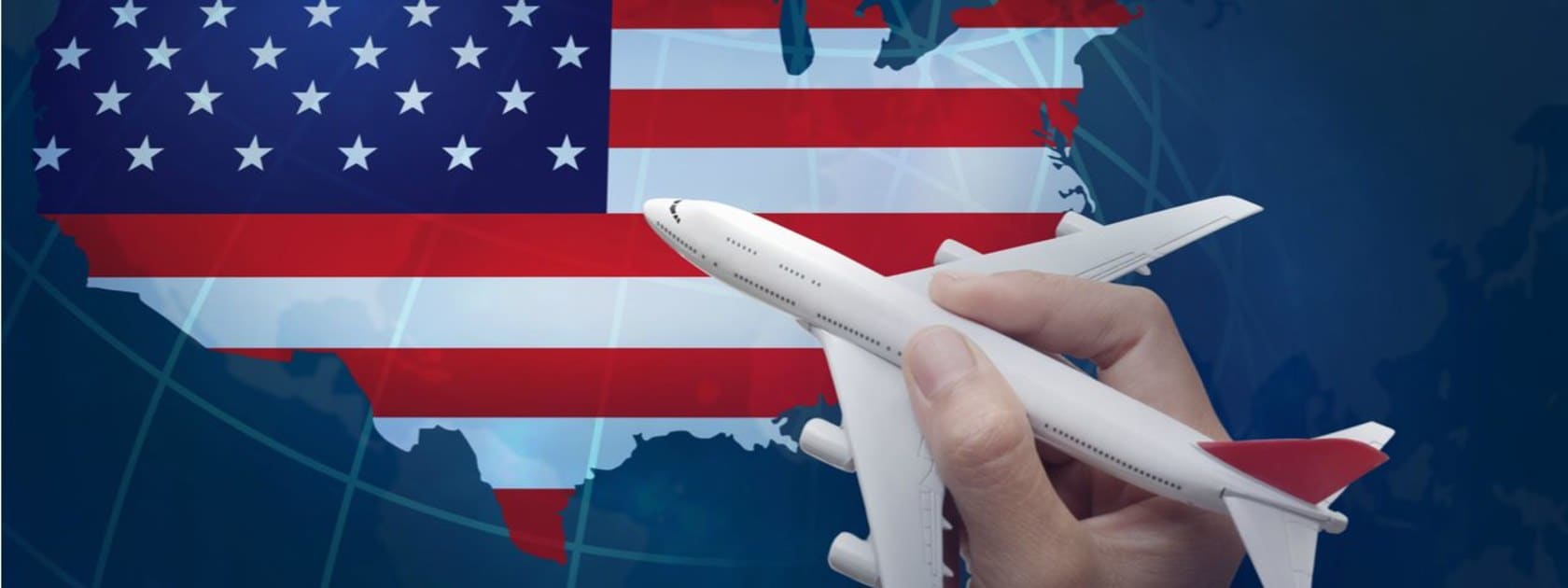
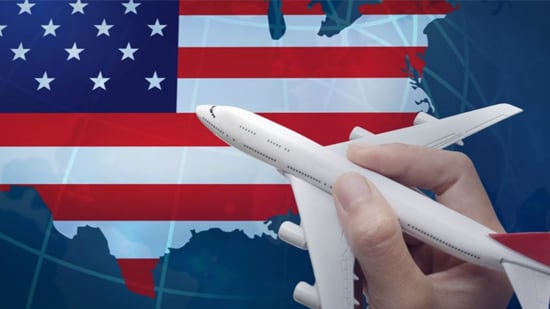 In this report, we take a detailed look at some of the top universities in the US offering aviation and aeronautics courses, including a comparison of the cost, courses offered, course content, duration of study, and aviation scholarships and grants.
In this report, we take a detailed look at some of the top universities in the US offering aviation and aeronautics courses, including a comparison of the cost, courses offered, course content, duration of study, and aviation scholarships and grants.



